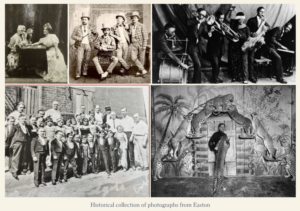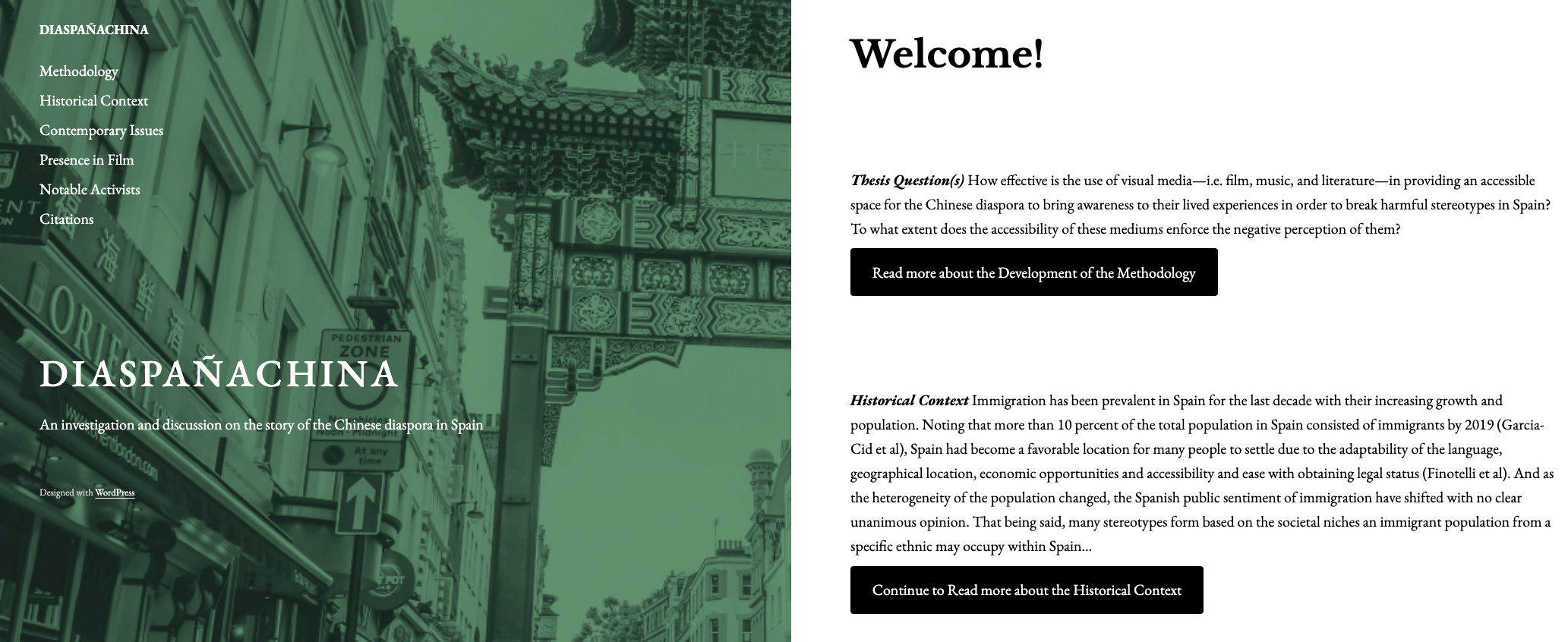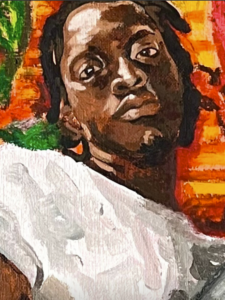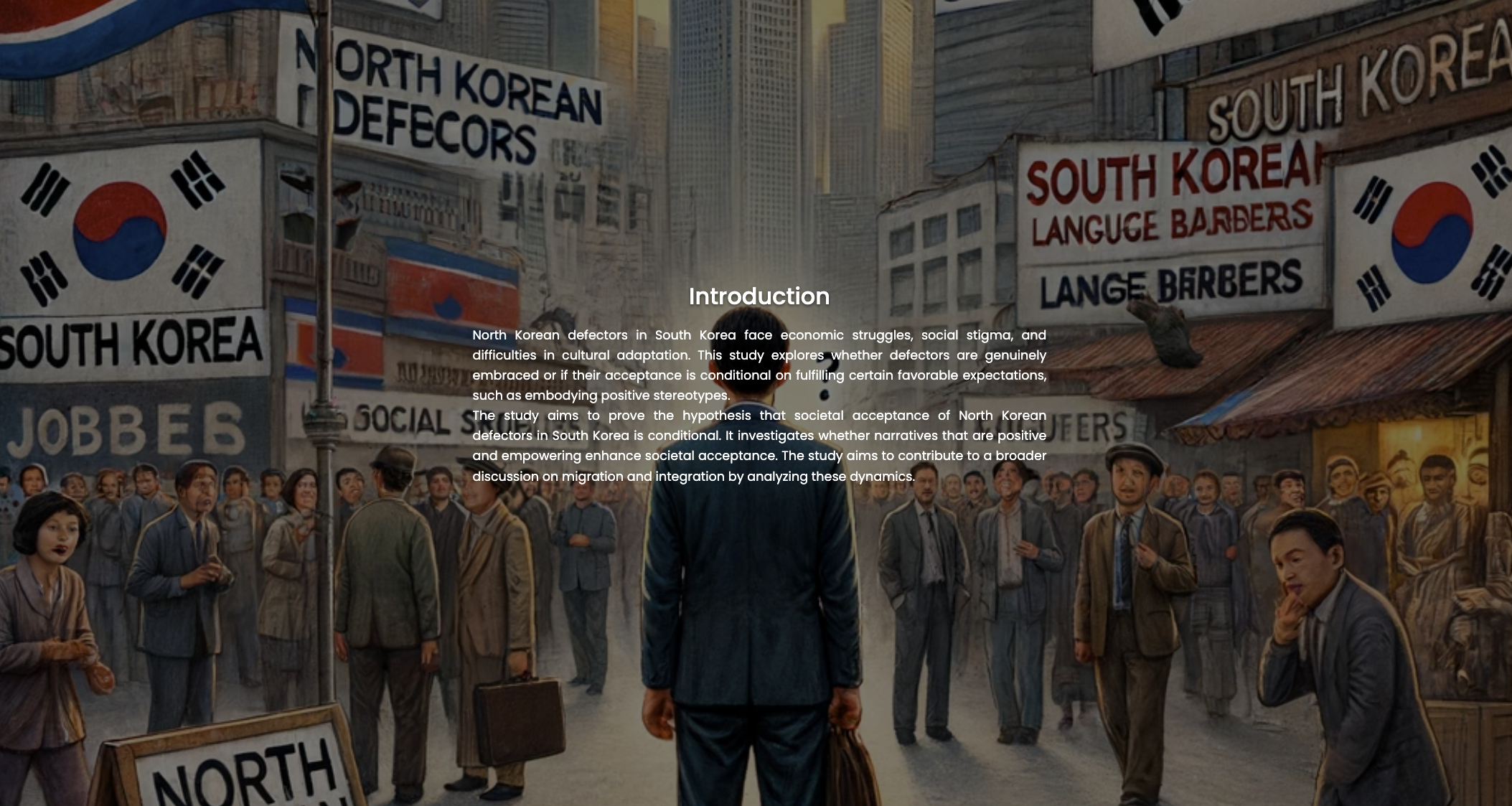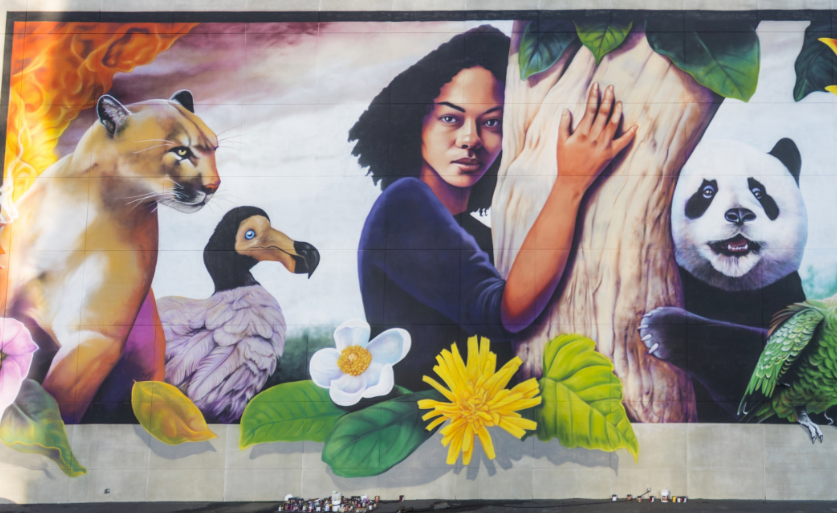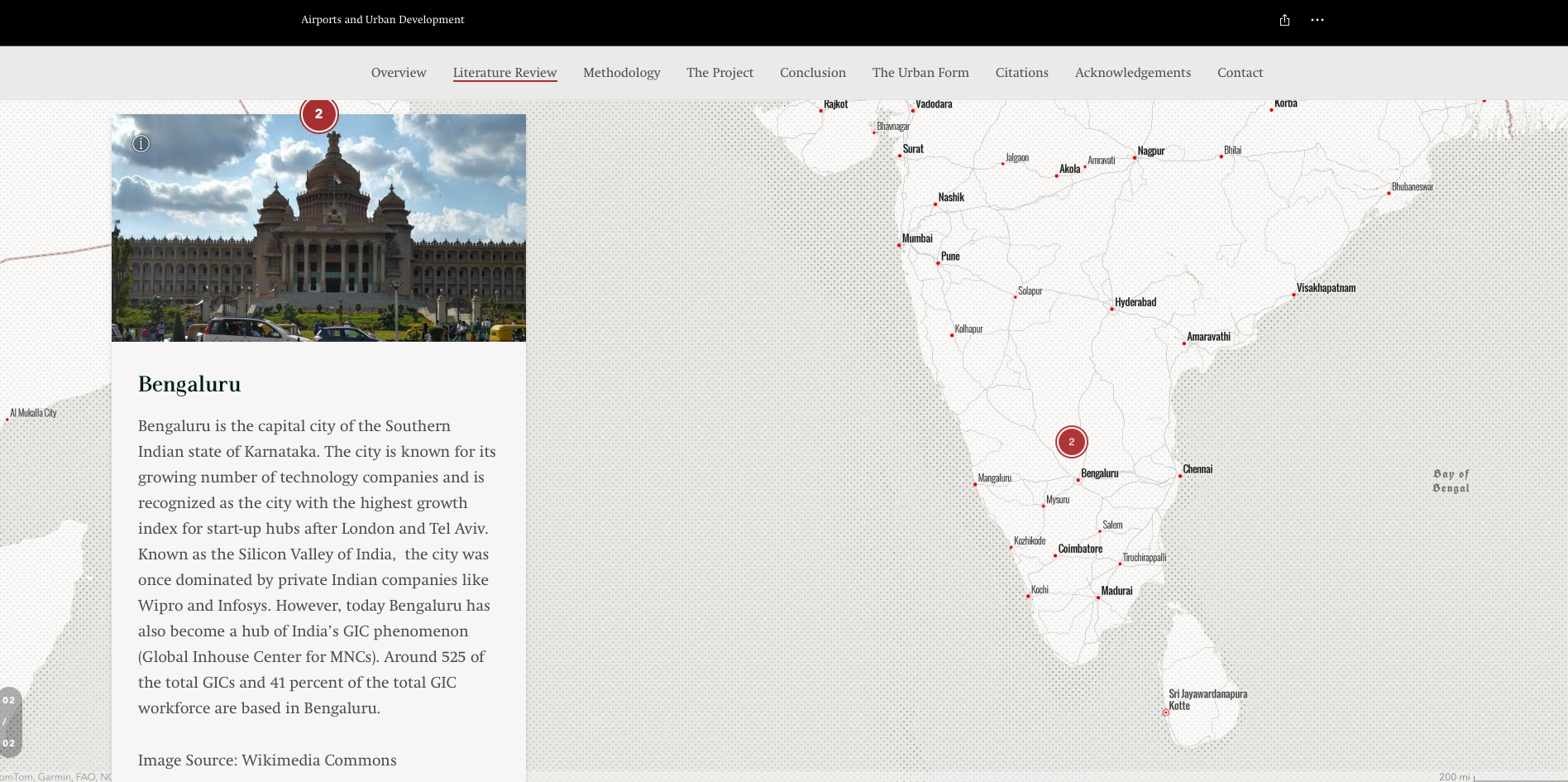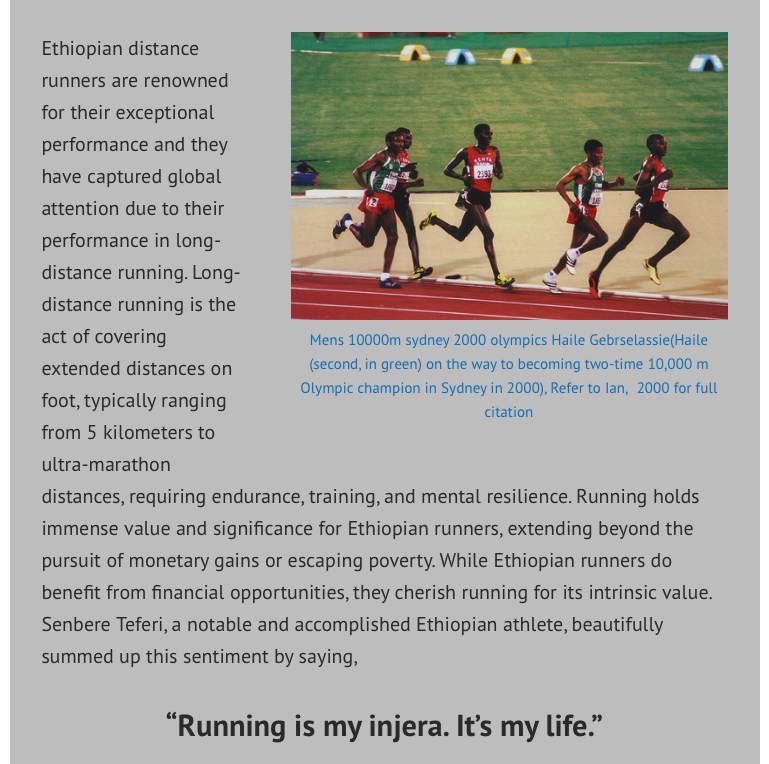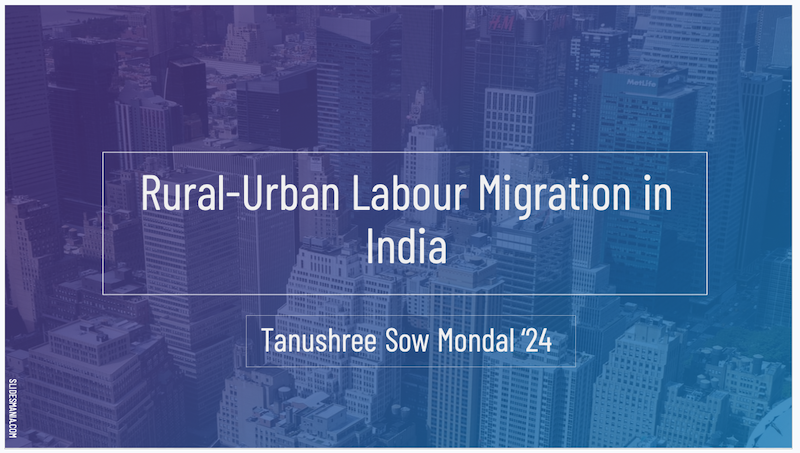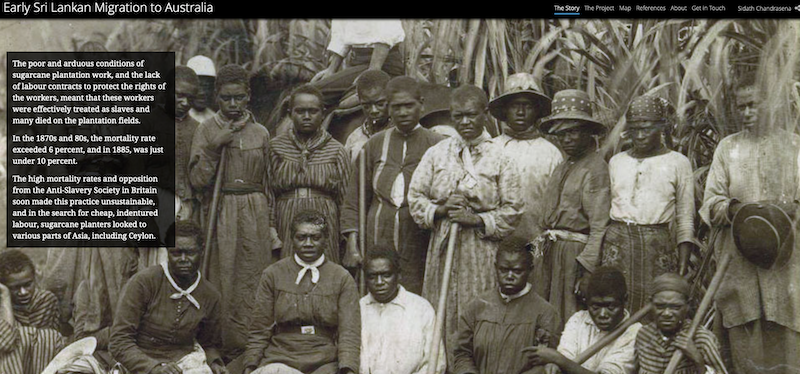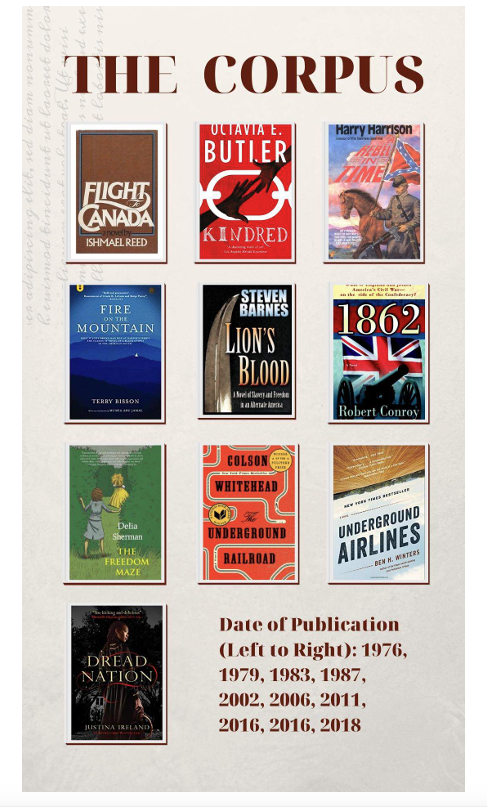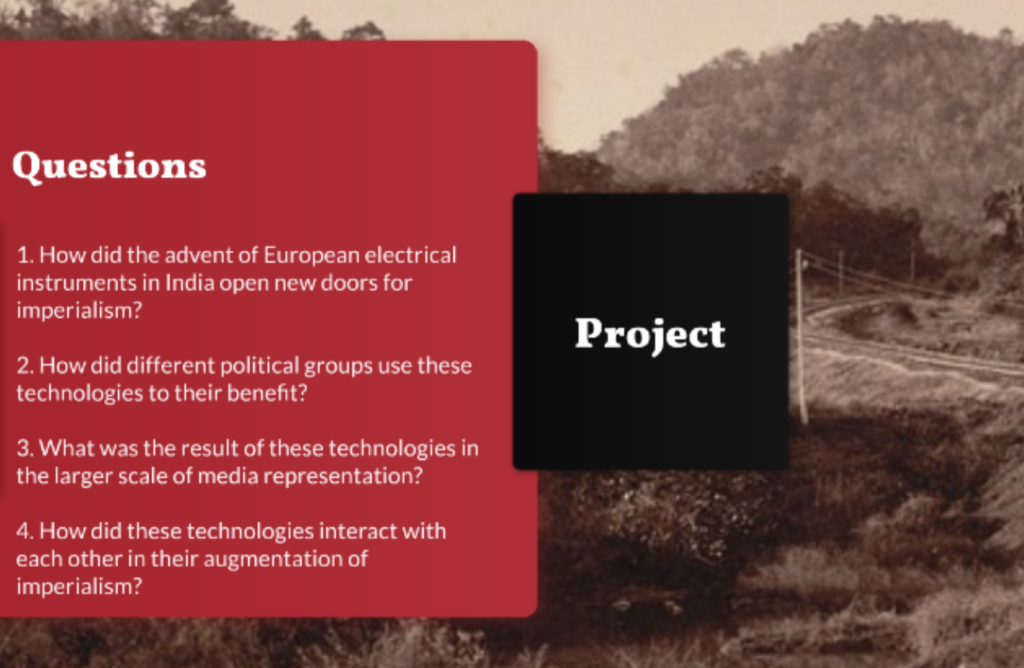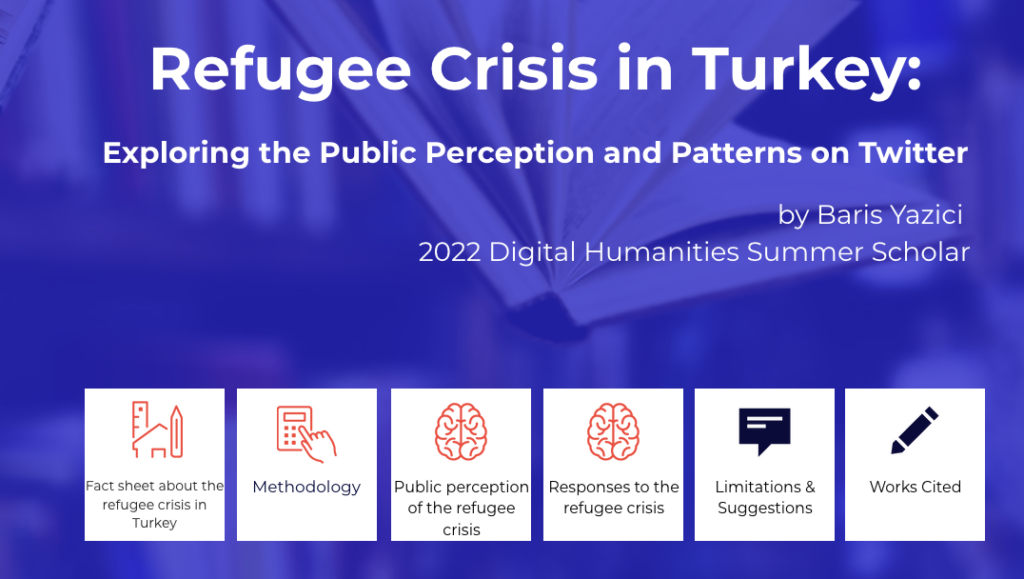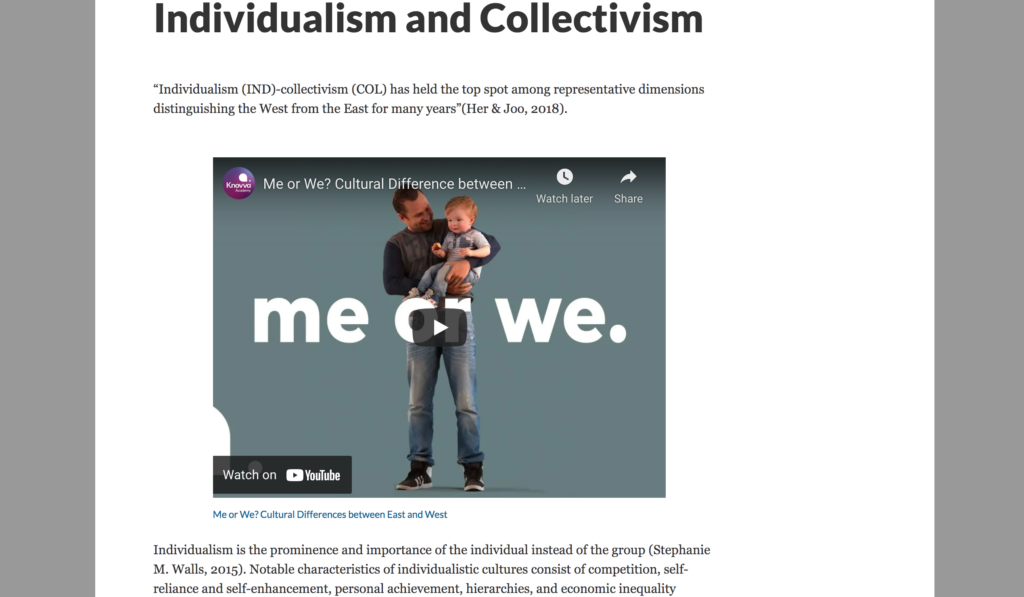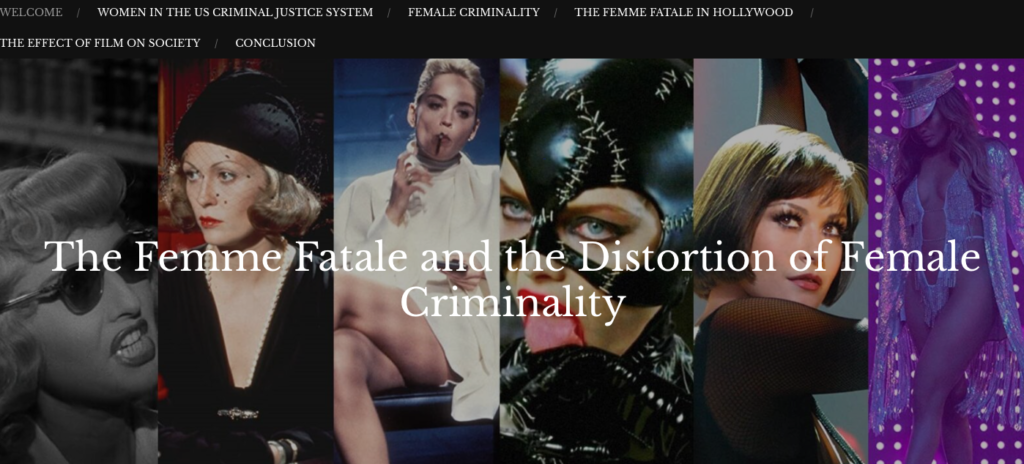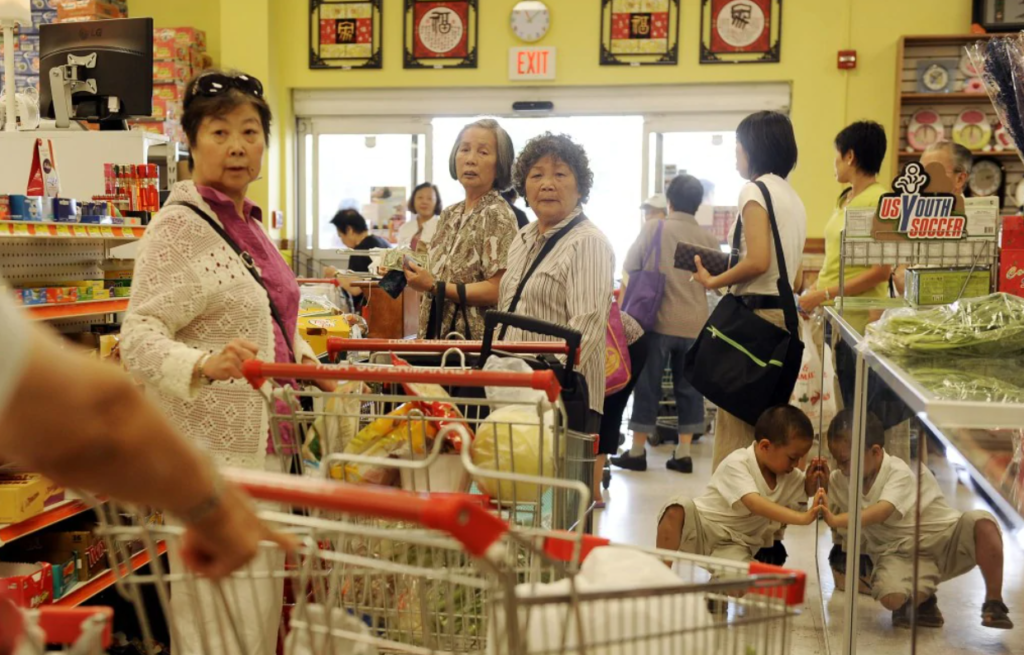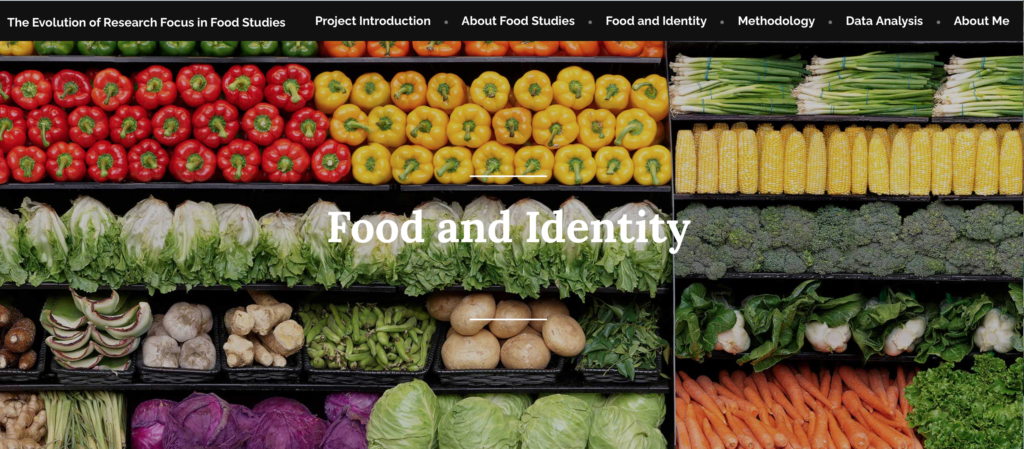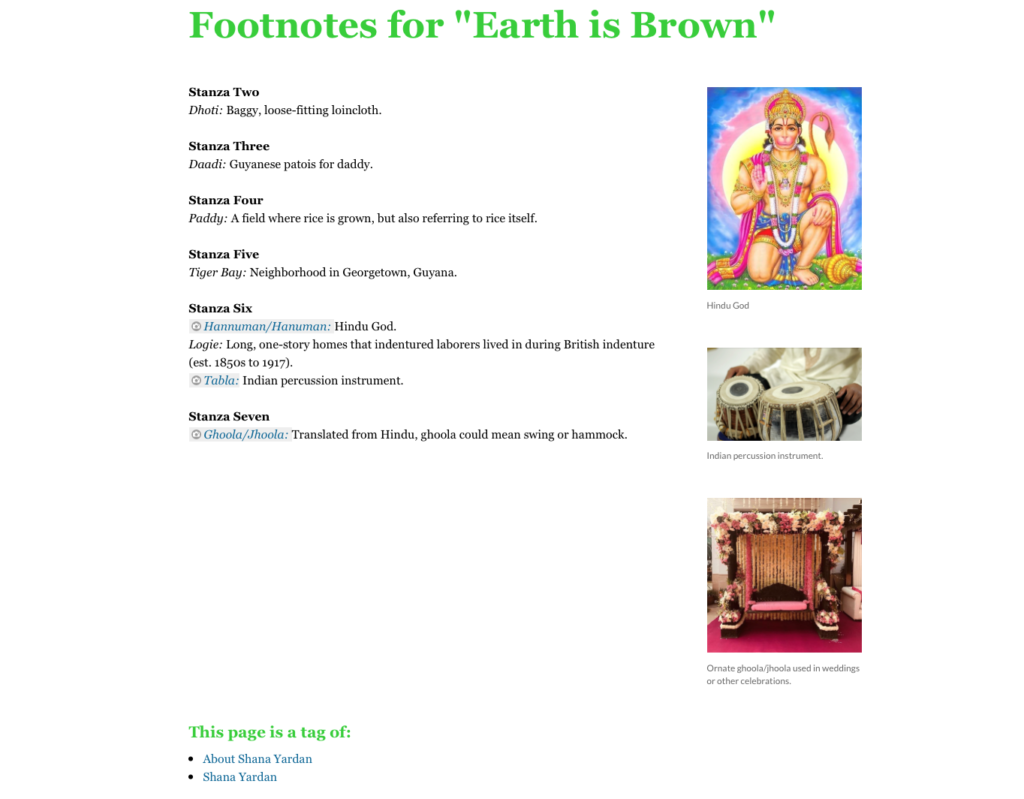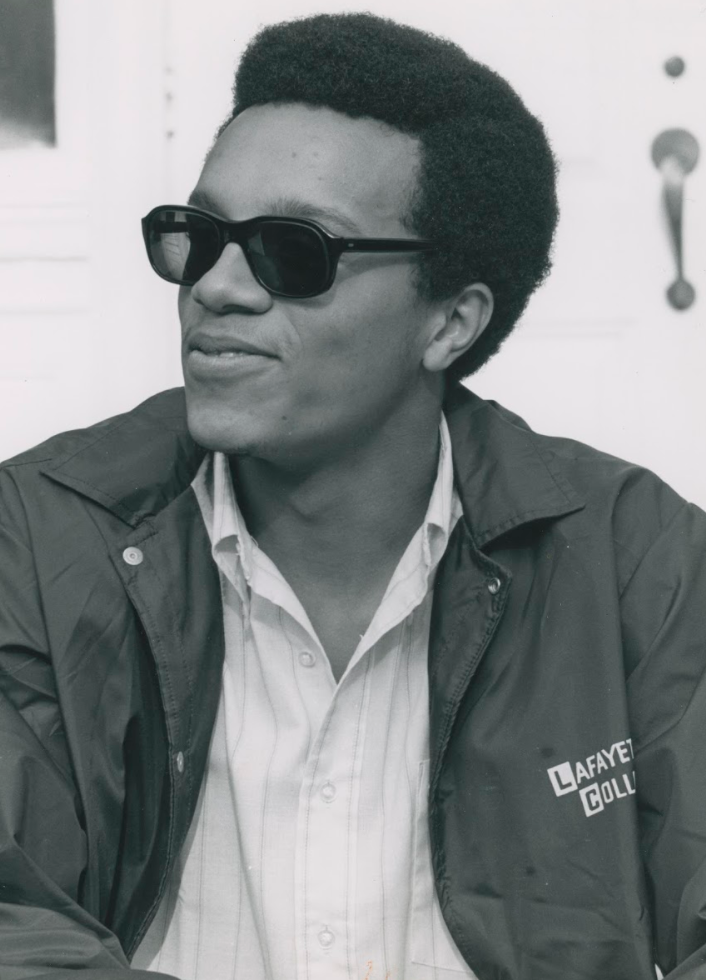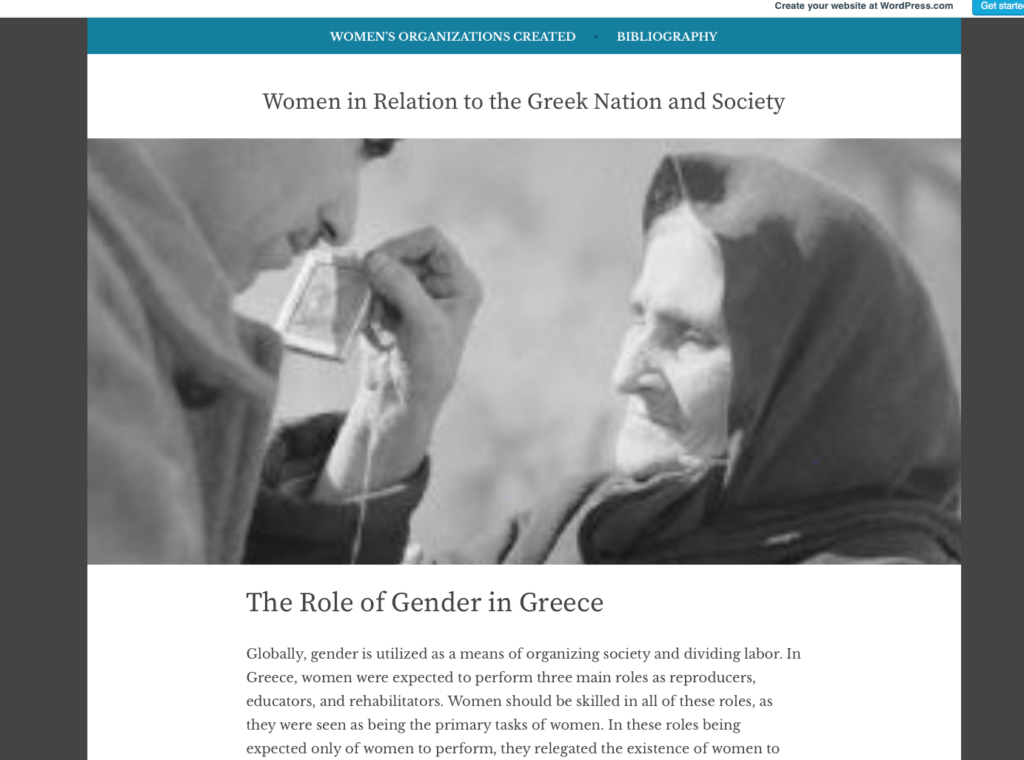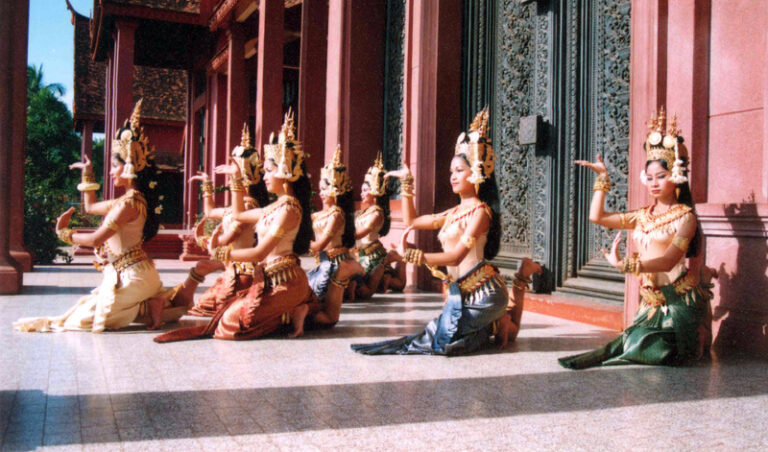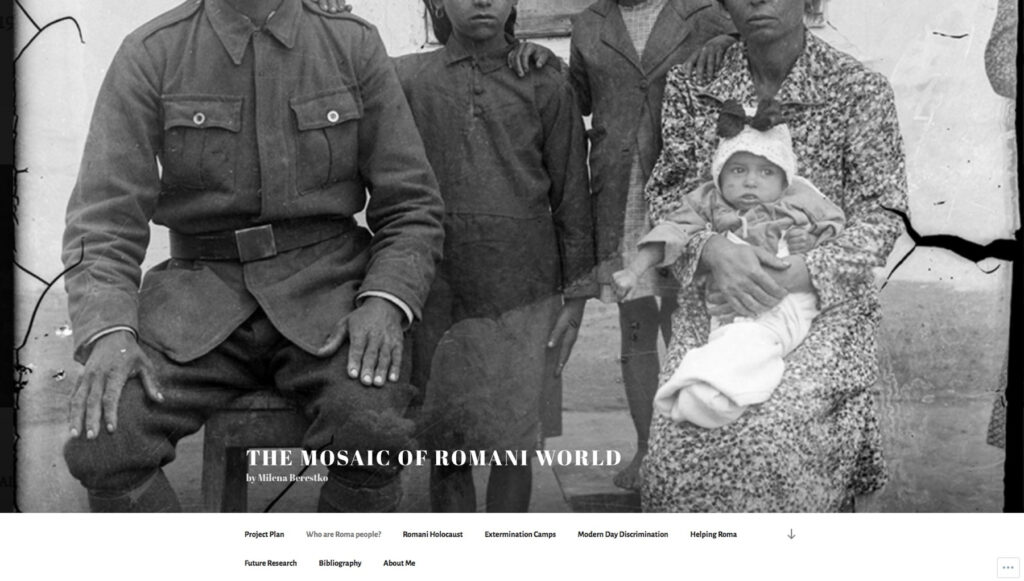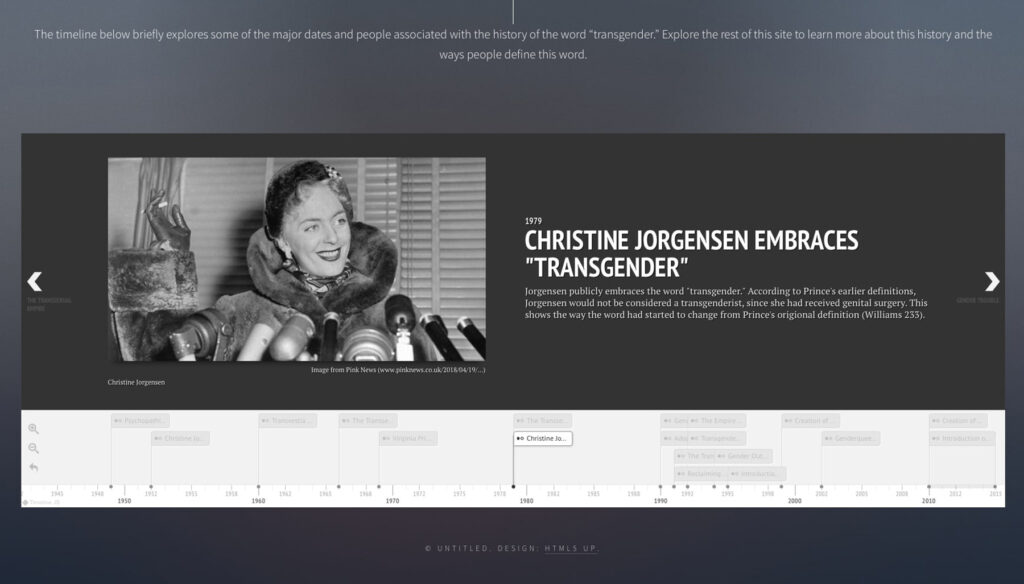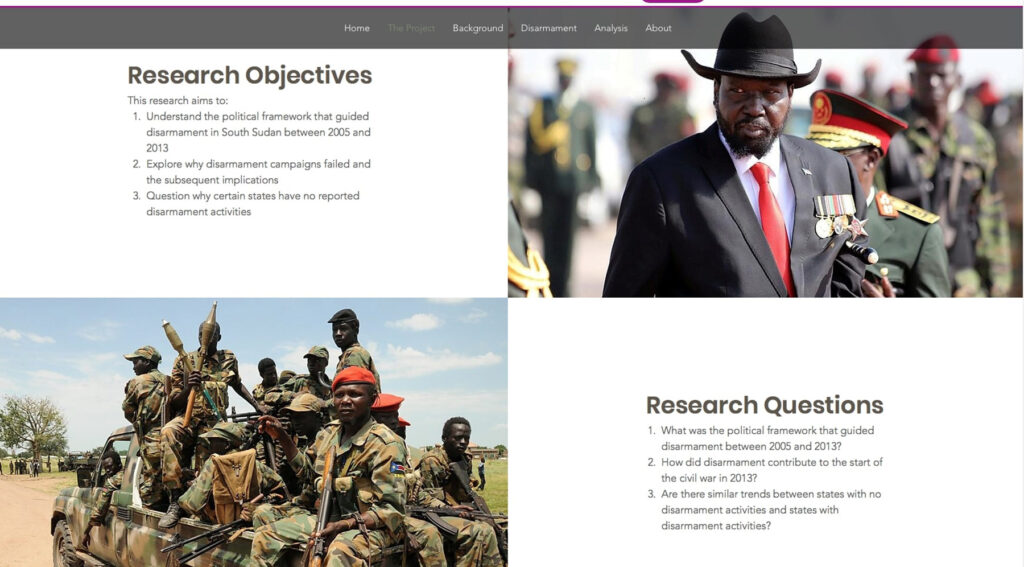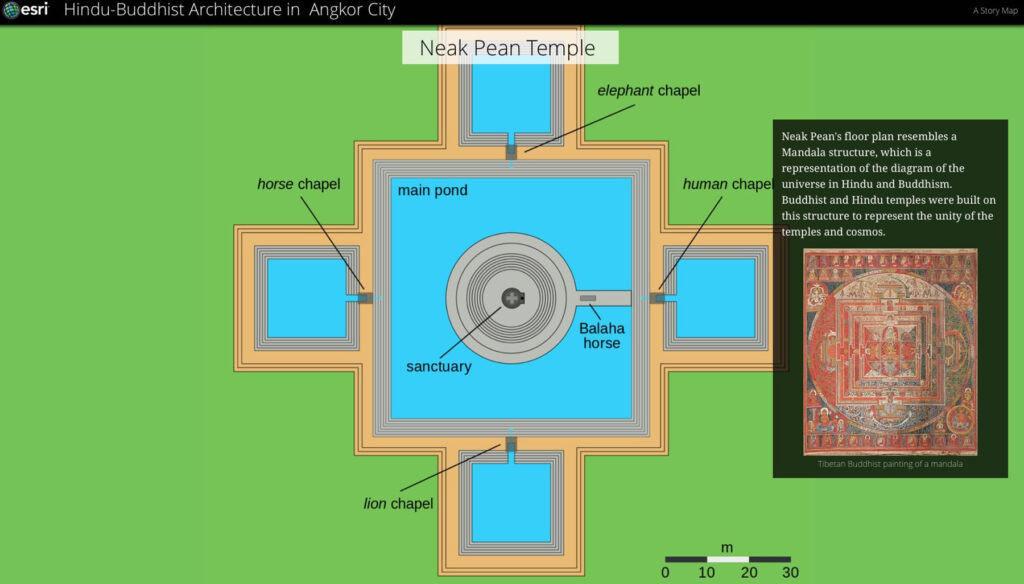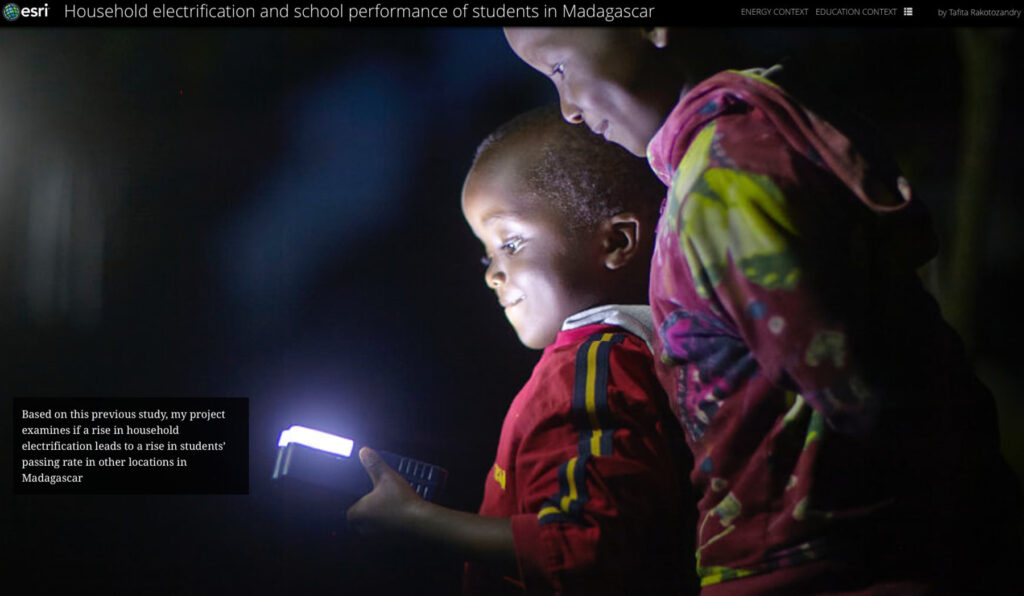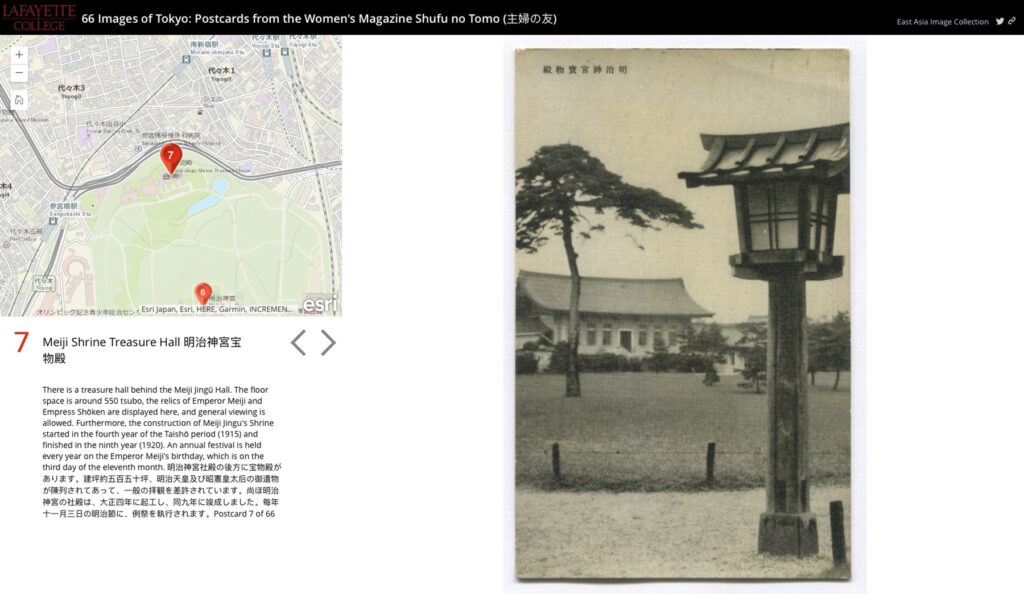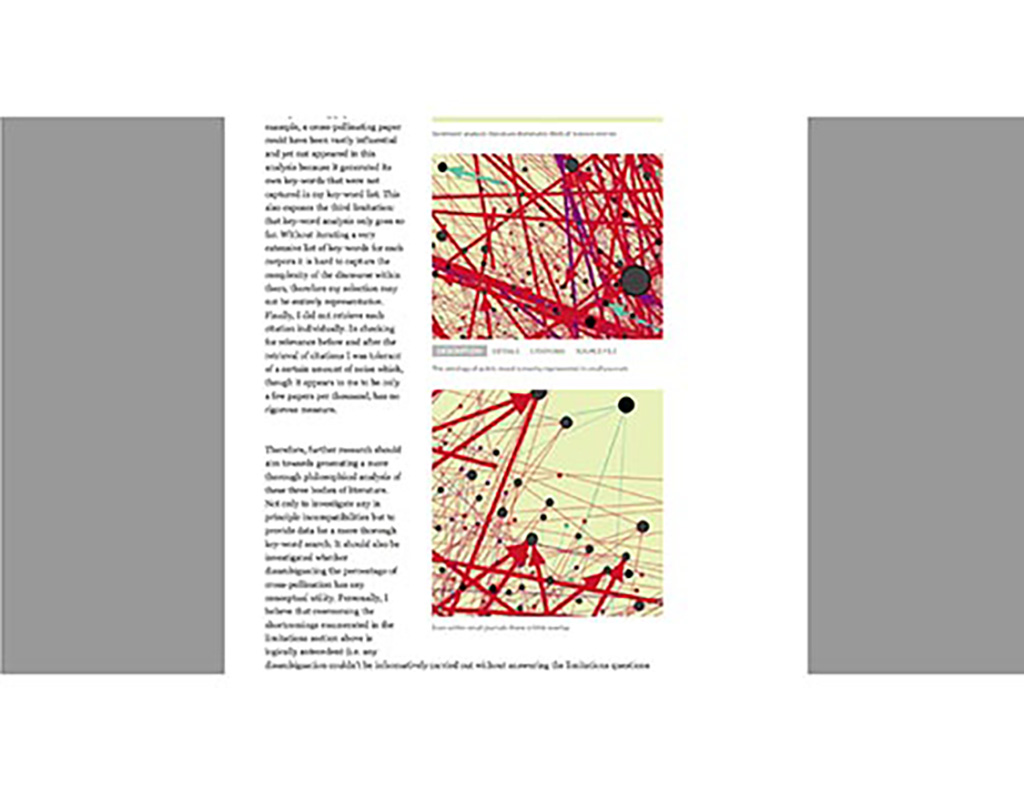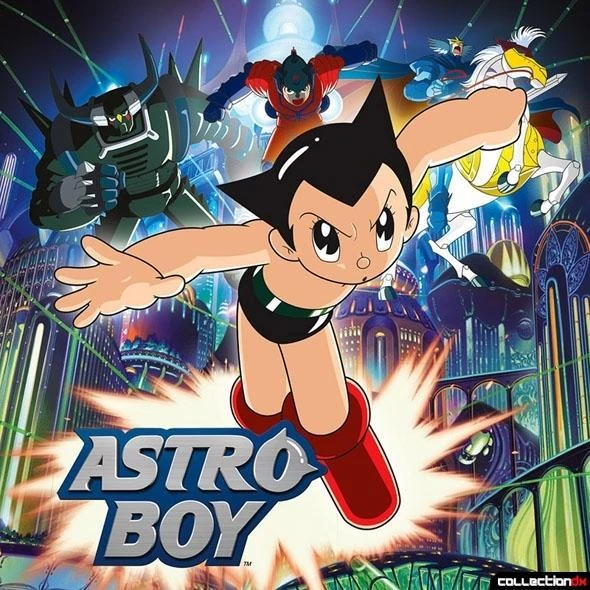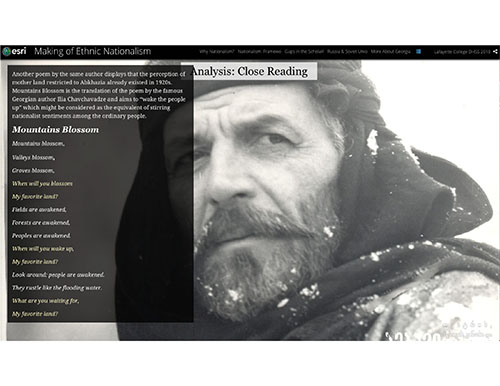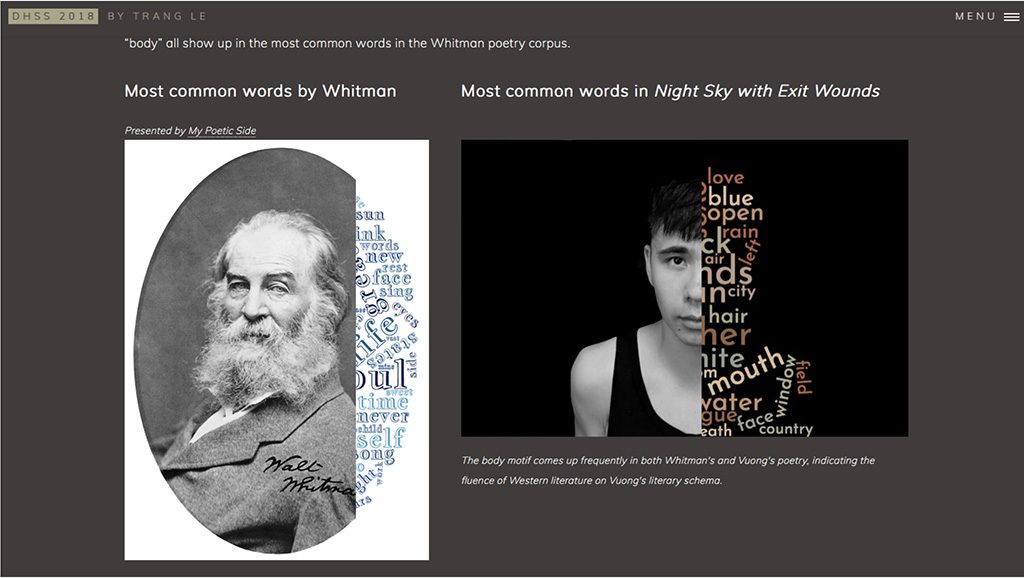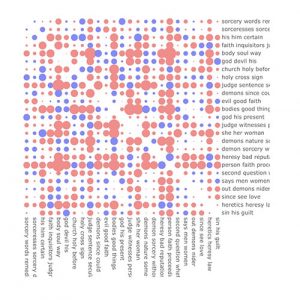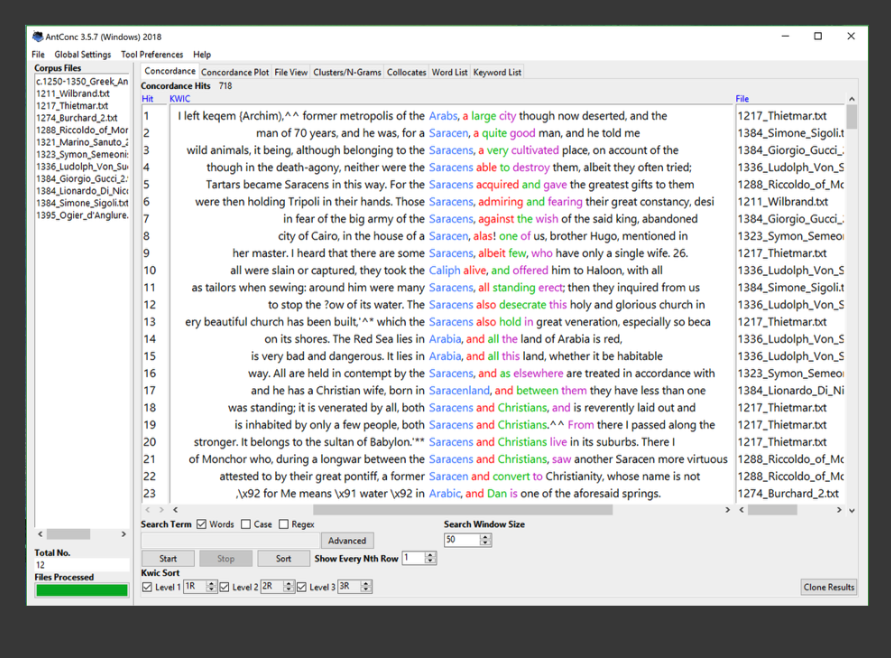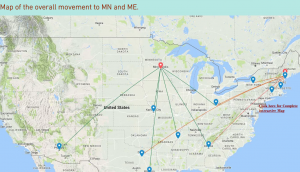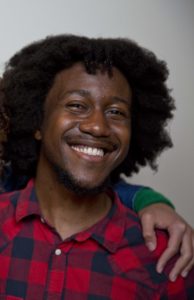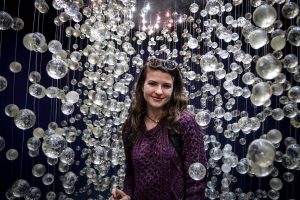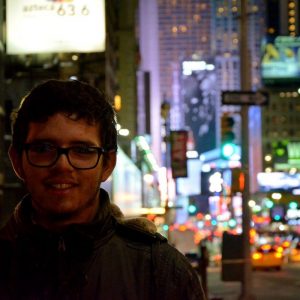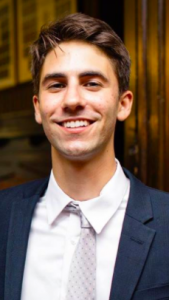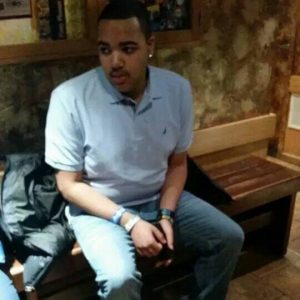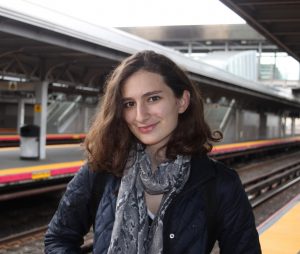2024 Cohort & Projects 
Hugo Welsh ’25
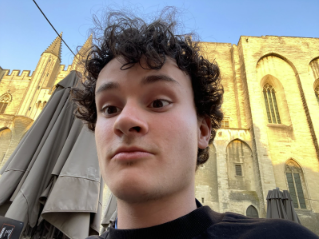 Since coming to college, Hugo has begun doing stand-up comedy as a personal interest. This habit has sparked a curiosity into the history of live entertainment itself, more specifically that of the local Easton area. Through his research, Hugo aims to capture the colorful past of today’ssleepy town of Easton.
Since coming to college, Hugo has begun doing stand-up comedy as a personal interest. This habit has sparked a curiosity into the history of live entertainment itself, more specifically that of the local Easton area. Through his research, Hugo aims to capture the colorful past of today’ssleepy town of Easton.
Project: Showbiz in Easton: Bringing back a forgotten golden age in our little town
I’ve created a StoryMap designed to recapture the peak of the entertainment industry in Easton. There where a total of 43 theaters here over the years, of which only 29 had enough information available to map and document. To do this I’ve had to collect data from the Easton Public Library Marx Room, which contained a variety of historical articles ranging from photographs and tickets to historical essays. Additionally I also interviewed local expert on the topic Kenneth Klabunde who helped narrow in my focus on the topic. Together, the product of these endeavors allowed me to tell a story of this exciting time in Easton.
Platforms and Tools used: ArcGIS Story Maps
Kelsey Wong ’25 (Biochemistry & Spanish major)
Kelsey studied the movement of Chinese/East Asian immigration in Latin America, asking how effective are the varying types of visual media—i.e. film, music, and literature— to provide an accessible space for the Chinese diaspora to bring awareness to their lived experiences in order to break harmful stereotypes in Spain? To what extent does the accessibility of these mediums enforce the negative perception of them?
Project: Investigating history and experiences of the Chinese Diaspora in Spain
Platforms and Tools used: Wix, WordPress, YouTube
Damoi Morgan ’25 (Music and Economics major)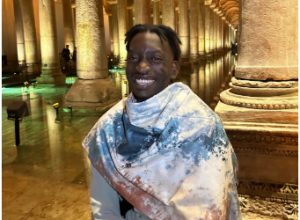 ”
”
Damoi Morgan, Class of 2025. Music and Economics Double Major. I completed this project while in Dakar, Senegal and Split, Croatia! I am a student of the world. Being from Brooklyn, New York and having a Jamaican Father and Trinidadian Mother, I was deeply immersed in my West-Indian heritage. The steel pan is my main instrument and while being an academic as there is power in knowledge, I am also a musician. I have been playing the steel pan for 5 years (2024) and I have been a percussionist since I was born, hitting the side of my dad’s car to the radio. Because of my avid love for music and traveling, I developed this project to allow my passion to be put to use. I always want to involve myself in academia in which I can be apart of and contribute, which is why studying, analyzing, and living within other people’s art is so powerful for me.
Project: From Resistance to Diplomacy: Steel Pan & National Anthems
Platforms and tools used: Scalar, YouTube
Chris Yoon ’26 (Economics & Government & Law major)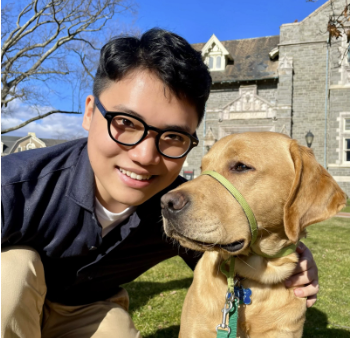 ”
”
Chris Yoon, Class of 2026, is an Economics and Government & Law student at Lafayette College with interests in electoral rights, business development, and inclusive tech access. Before attending Lafayette as a non-traditional student, he worked as a Senior Airman, Business Interpreter, Legal Intern, and Book Author. Currently working on his third book, “Yapper Abroad,” he’s seeking contributors eager to push the limits of yapping. Reach out if interested.
Project: Unveiling Exclusion by Machine Learning: The Case for North Korean Defectors
Platforms and tools used: GitHub, Naver API (sentiment/thematic analysis) VADER (Valence Aware Dictionary and sEntiment Reasoner)
Ella Clabaugh ’25 (International Affairs and Organizational Studies major)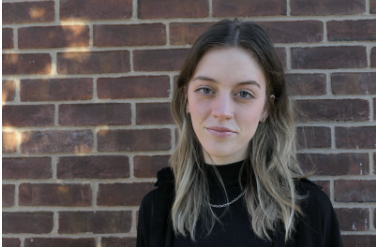 ”
”
I am a rising senior studying International Affairs and Organizational Studies at Lafayette, and my interests in affordable housing solutions influence my research. I enjoy learning about how the need for more affordable housing intersects with broader issues including access to educational opportunities and climate change and sustainability. Upon graduating, I plan to pursue further education to build upon skills that will help me to drive impactful change in the affordable housing sector
Project: Art Fights Back, exploring climate justice through NYC’s street art
Platforms and Tools used: NYC Open Data, Street Art Cities mapping tool, WordPress
Makda Baraki ’27 (Government and Law and International Affairs major).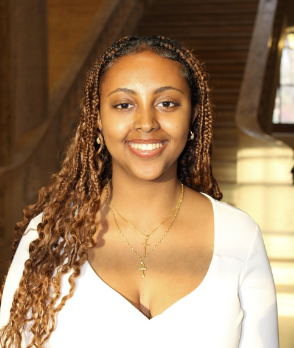
Makda Baraki, Class of 2027, Government and Law and International Affairs major. I am interested in understanding the journey and narratives of Eritrean migrants across Africa, with a specific focus on their integration into Ugandan society. By exploring the facilitators and barriers to assimilation and both migrant and host community perspectives, I hope to uncover insights into the strategies that support successful integration, contributing to more inclusive communities. This focused examination of Eritrean immigrants in Uganda serves as a gateway to exploring the broader dynamics of migration within Africa.
Project: Eritrea on the Move, The Journey and Narratives of Eritrean Migrants Across Africa
Platform and Tools used: ArcGIS Story Maps
2023 Cohort & Projects 
Fathima Yumna Hussain ’25 (Math & Economics major/Data Science minor)
Fathima is interested in exploring the impact of the India-Pakistan Partition and British colonialism on India’s Dalit caste (also known as the “untouchables”), including their methods of activism to overcome this imposed societal status.
Project: Voices of Dalit Activism: A Collective
Having read Emily Wilcox’s Honors Capstone paper titled “An Investigation of the Intersection between Art and Activism”, her chapter the necessity of artistic expression opened my eyes to the ability that art has to regenerate and restore groups that society has scarred. That was the birth of this project, to create a collective of various types of art practiced by members of the Dalit community whilst providing sufficient context to the art. Historically, the Dalits (दलित) or the “Untouchables” have been at the very bottom of the caste system that is prevalent in the Indian Subcontinent. This social differentiation has significantly impacted the ability of communities at the bottom of the system to achieve their aspirations in any shape or form. Rooted in the Hindu Varna’s, these classifications came about as a result of one’s occupation, wealth, power and privilege.
Platforms and Tools used: Scalar
Padmanabh Kaushik ’25 (Electrical & Computer Engineering major)
Padmanabh intends to study how the aviation sector is responsible for the changing global landscapes of people, technology, media, etc. that result in the evolution of new urban landscapes and culture.
When we think about cities, we hardly think about the role airports take in shaping them. Airports act as agents of mixed-use urban nodes anchoring a wide range of activities shaping globalization. In scholarly literature, “aerotropolis” is the most ideal form of urban planning that can help airports contribute to economic activities in a city, thereby leading to urban development (Freestone & Baker, 2011). However, there are a lot of debates about the setting and implications of the models which explain airport-driven urban growth. Additionally, not every city is planned based on an “airport-centric” model. The aim of this project is to study how airports act as agents of industrial and economic development, thereby leading to the growth of cities (Florida et al., 2015).
Platforms and Tools used: ArcGIS Storymaps, Gephi, Tableau
Abdi Kusata ’26 (Computer Science major)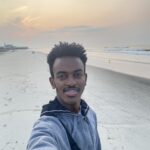
Abdi has an interest in economics, environmental science, and art. Being enrolled in a school that offers classes in these diverse fields allows me to explore my interests. Through his research, he wants to uncover both the challenges and the joys of the Ethiopian running culture, revealing its diverse nature and deep and profound impact on Ethiopian society. He aims to offer valuable knowledge about the resilience and determination found in people, the significance of coming together as a community, and the pursuit of personal growth and achievement.
Project: Beyond the Track: Unpacking the Influence of Running Culture in Ethiopia
There are many questions you may ask as you proceed, but one that has guided this process has been this: “What are the underlying factors that shape the running culture in Ethiopia, and how does this culture impact the larger society? Furthermore, what historical successes and potential pitfalls are associated with the running culture, both for the runners themselves and the community at large?”
Platforms and tools used: WordPress, YouTube
Christo Maheras ’26 (Policy Studies major)
Christo wishes to examine the effects of imperialism and migration on languages and dialects such as the Inuktitut language in the central and eastern Canadian Arctic and/or the Hawaiian language in the United States, and illustrate these linguistic pathways using mapping tools.
Project: Linguistic Wealth: Language Standardization in Global Academia and the Effects on Minority Languages
Platforms and Tools used: ArcGIS StoryMaps
Tanushree Sow Mondal ’24 (International Affairs & Economics major)
Tanushree is focused on development and social perceptions of different identities in India; Tanushree’s research project ideas include the portrayal of women in Bollywood film across time; the hip-hop scene within Dharavi, a suburb in Mumbai; and the internal migration of unskilled workers in India and its health implications.
Project: Living in the City: The Migrant Worker Experience in Kolkata
Platforms and Tools used: Adobe Photoshop, Canva, Maya, Unity, WordPress
Zeynep Pilatin ’26 (Art & Computer Science).
Zeynep proposes to investigate the history, development, significance, and cultural influences of the art of tattooing, especially in non-white communities (such as Mayans, Polynesians, and groups in SE Turkey) where tattooing has been a part of the culture for centuries, before its popularity in Western media and society.
Project: Marked by Beauty: Studying Women’s Artistry and Identity through Tattoos
Tattooing as an art form and practice has been around for more than 5000 years. It has developed in and become a part of the culture of many different regions. This research focuses on the historical development and meaning of tattoos and tattooing for women, especially in South East Turkey, the Philippines, New Zealand, and beyond.
Platform and Tools used: Adobe Photoshop, Canva, Maya, Unity, WordPress
2022 Cohort & Projects 
Sidath Chandrasena ’25 (Integrative Engineering & International Studies major)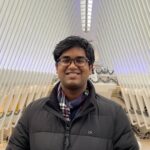
Sidath was born and raised in Adelaide, South Australia and is of Sri Lankan descent. The Sri Lankan Australian community is a growing community, as the 7th largest Asian community in Australia (abs.gov.au, 2020). Being part of this group has motivated him to learn about the early origins of this community through this migration.
Project: Early Sri Lankan Migration to Australia
The mass migration of Sri Lankans to Queensland in the late 19th century is an anomaly in a period of Australia’s exclusively white post-colonial history. Yet in 1882, the SS Devonshire left Galle, Ceylon (now Sri Lanka) with 500 Cingalese, bound for Mackay & Bundaberg in North Queensland. Many of these migrants remained in Australia after federation in 1901, despite the hostile environment towards non-Europeans. Little information exists about this migration, apart from a few pieces of literature, newspaper articles and records.
Platforms and Tools used: ArcGIS
Socheata Huot ’25 (Civil Engineering major)
Socheata intends to research aspects of the history of Cambodia; one of Socheata’s potential research questions is concerned with the relationship between humans and the urbanization of the city of Phnom Penh throughout time. What influences the organization of cities on human behavior, community living, and culture?
Project: The Transition of Phnom Penh City: Buildings Development in the Contemporary City
Platforms and Tools used: Description forthcoming
Maya Nylund ’23 (English & Art History major; Film & Media Studies minor)
As an aspiring creative writer invested in social justice, Maya is deeply interested in a fundamental question of fiction: who gets to tell which stories, and how? Her project speculates on the ethics of representation by using distant reading to investigate whether there are qualitative differences in speculative fictions of American slavery produced by authors of different races.
Project: Race and Representation in Counterfactual Speculations of Slavery
As a scholar and aspiring writer, [Maya] was interested in answering a, if not the, fundamental question of fiction: who should have the license to tell which stories? And, by extension, how should they be told? How does one’s own identity impact the products of one’s imagination?
Platforms and Tools used: Canva, Voyant
Emily Ortiz ’23 (Anthropology & Sociology major)
Emily’s academic interests include Queer Caribbean studies, feminist theory, and education Studies.
Project: Queer Caribbeans: Art and Activism
Emily’s research begins by mentioning the influence of art as a form of activism for Queer individuals during the 1980s Aids epidemic. During this devastating time, Queer people, especially Black And Brown Queer people, were the most affected by the disease. Through years of protesting and political organizing, Queer folks gathered in the community to make their voices heard. The contribution of art as a form of activism honors the community organizing that curated social change by LGBTQIA+ members and Queer people of color. This research focuses on the artwork of Queer Caribbean Photographers: Mia Vasquez and Nadia Huggins. Each of their work highlightsthe connections between identity, activism, and art. My main goal for this project is to honor and credit the artwork of Queer Caribbeans, who use their creativity to highlight and represent their communities. Art has the power to cultivate social change but, most importantly, make people feel seen.
Platforms and Tools used: Scalar
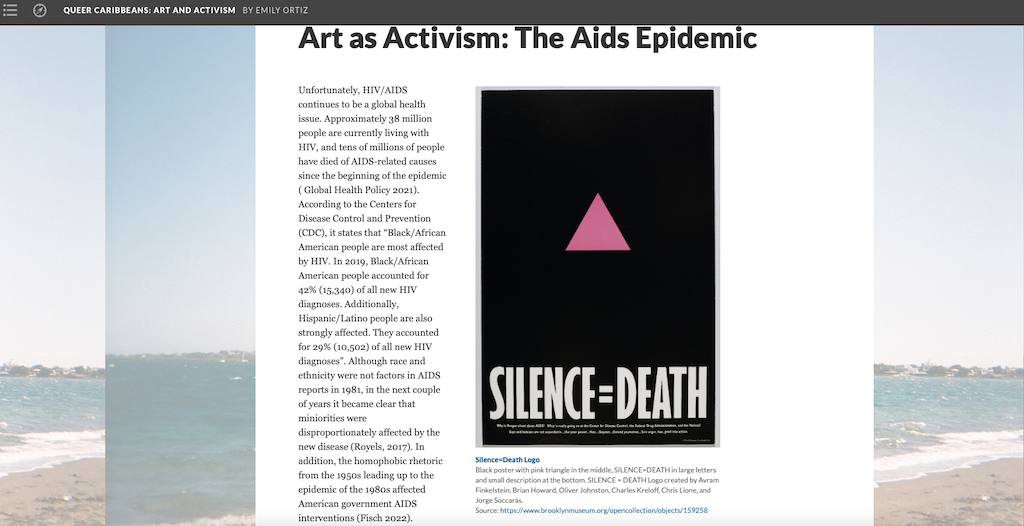
Shirel Salinas, ’24 (International Economics major)
Shirel will examine the indigenous language family of Quechua and its use by indigenous communities in Ecuador, and media representations of these contributing to harmful stereotypes of indigenous people.
Project: Investigating Indigenous Language Revitalization in Ecuador
Research Question: To what extent, is indigenous language revitalization possible in Ecuador? The research question above came from frustrations Shirel experienced, at a market in Salasaca, Ecuador. Walking around booths, Shirel felt lost from their cousin when looking for bracelets and when asking for directions,came across various people who only spoke to me in Quechua. In previous visits to the country, Shirel always felt involved, encompassed by aromas of their culture, included and at peace, yet, at that moment they felt like a foreigner. Shirel couldn’t help but feel that they neglected a part of themselves they shouldn’t ignore.
Platforms and Tools used: TimelineJS, Wix
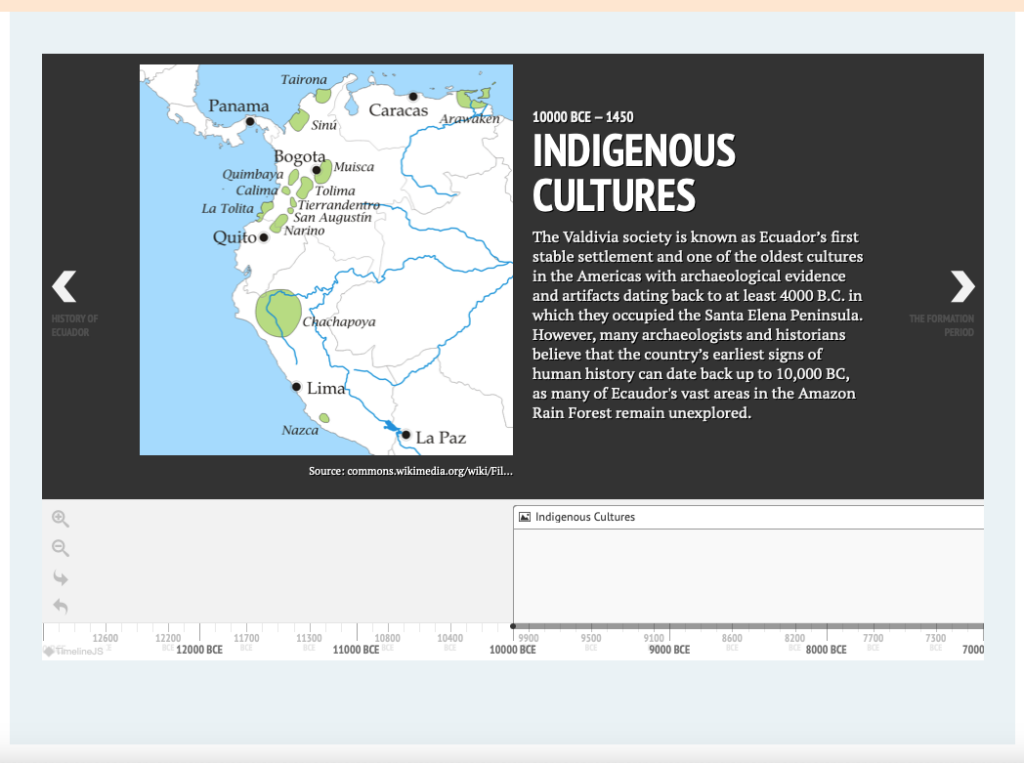
Swetha Tadisina ’25 (Computer Science major)
Swetha is interested in learning how technology has been used in the past by different social groups and could be used in the future. Swetha’s project focuses on how three technologies – telegraph, rail, and camera – influenced power dynamics in India during the colonial period.
Project: Rail, Reel, and Telegraph — Technology and its Optics in 19th c. British India
Archival Images from various British and Indian sources’ websites and collections.
Maps from the David Rumsey Collection and University of Chicago’s Digital South Asia Library.
Platforms and Tools used: Google Sheets, Google Slides, Prezi, YouTube
Trang Tran ’25 (Mathematics-Economics & Psychology major with Economics Certificate in Financial Policy and Analysis)
Through the DHSS program, Trang had the chance to learn more about various digital tools, digital methods, and research methodologies and then utilize them to examine a small sample of the Vietnam War coverage in Vietnamese and American contemporary documents including book, textbook, and Wikipedia. Trang’s project attempted to explore the similarities and differences in those reports and present the way these 2 nations, with 2 different political ideologies, shared information regarding the same issue via different platforms for the modern generation.
Project: A Glimpse at the Second Indochina War (The Vietnam War) Through Vietnamese vs. American Public Documents
In this project, by using digital methods and tools for textual analysis, I aimed to explore the differences and similarities between the Vietnam War coverages in English and Vietnamese contemporary materials, and thus, attempted to answer my research question concerning the portrait of this conflict from Vietnamese vs. American modern perspectives. To construct that picture, my project focused on three major events in the Vietnam War, which are Operation Starlite (the Battle of Van Tuong) – the first major offensive action conducted by a purely US military unit, the Tet Offensive – a decisive turning point that leads North Vietnam to victory, and the Fall of Saigon – the final and official victory of the Democratic Republic of Vietnam (North Vietnam) against the Republic of Vietnam (South Vietnam). Those events occurred throughout the period from when the US military officially entered the Vietnam War in 1965 to the time when a North Vietnamese tank rolled through the gate of the Presidential Palace in Saigon, effectively ending the warfare in 1975.
Platforms and Tools used: ArcGIS StoryMaps, Microsoft Excel, Orange, RStudio
Baris Yazici ’25 (Mathematics & Philosophy major)
Baris is interested in exploring social and economic phenomena and developing social entrepreneurship projects accordingly. Using Twitter to mine data, Baris’s research aimed to understand the Turkish public’s perception and response to the refugee crisis in Turkey with the hope that any findings can be used to make more informed policy decisions to alleviate the growing tensions in Turkey.
Project: Refugee Crisis in Turkey: Exploring the Public Perception
Platforms and Tools used: RStudio, Twitter’s API, Voyant
2021 Cohort & Projects 
Yazdan Basir ’23 (Computer Science major)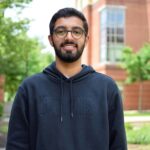
Yazdan is a junior Computer Science major with a passion for math and politics. Through DHSS this summer, he was able to investigate novel mathematical models being used to detect partisan gerrymandering in the US, ahead of the 2021 nationwide redistricting cycle. His website aimed to provide a narrative around the process of detecting gerrymandering by establishing definitions, understanding why conventional methods failed, analyzing the mathematical models themselves and the court cases they appeared in, and who gerrymandering affects the most (i.e the significance of this).
Project: Numbers, Districts, and People: The Fight Against Partisan Gerrymandering
The aim of this project is to develop insight and an understanding of the various approaches – from modern mathematics and computer science – being used to detect partisan gerrymandering and why doing so is imperative for the future of democratic systems around the world.
Gerrymandering is a long-standing political phenomena that individuals, organizations, and/or parties abuse for an unfair advantage over the other. It’s just like any tool in the book. However, in my opinion, the ramifications of gerrymandering run far deeper than other political maneuvers used to gain a seat here or there.
Ultimately, this project is an effort to understand & answer the following questions:
1. What are the current methods being used to detect partisan gerrymandering? How effective are they?
2. Why is there even a need to detect gerrymandering in the first place? What’s the big deal?
3. What impact does gerrymandering have in the US today?
Platforms and Tools used: ArcGIS, FiveThirtyEight’s Gerrymandering Project, Github, Google Scholar, JSTOR, ResearchGate, Tufts University’s Metric Geometry and Gerrymandering Group (MGGG)
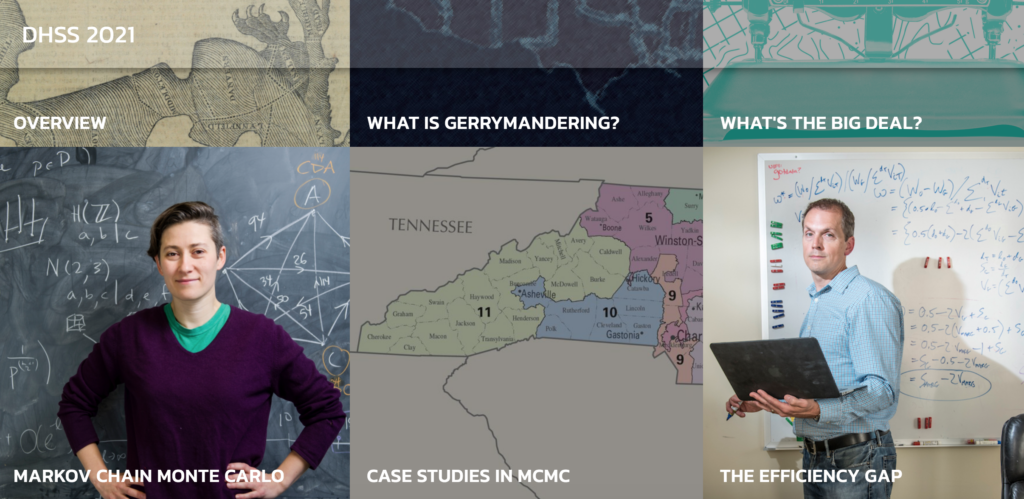
Meltem Pelin Çetin ’24 (International Affairs major)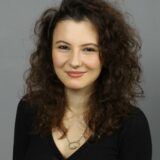
Yazdan is a junior Computer Science major with a passion for math and politics. Through DHSS this summer, he was able to investigate novel mathematical models being used to detect partisan gerrymandering in the US, ahead of the 2021 nationwide redistricting cycle. His website aimed to provide a narrative around the process of detecting gerrymandering by establishing definitions, understanding why conventional methods failed, analyzing the mathematical models themselves and the court cases they appeared in, and who gerrymandering affects the most (i.e the significance of this).
Project: Byzantium, Constantinople, Istanbul: the City
Cetin argues that the City has never been owned by any state or nation – the City is instead its own entity formed by tensions and coexistence, a transnational space that harboured and still harbours various ethnicities, countries, religions, and cultures.The project attempts to combine and connect the various forms of humanities such as the historical works based on the City, the literary narratives of the City and the visual arts inspired by the City in the project to evoke the senses of the audience through the use of digital art components, including but not limited to digital images, videos, photographs, sound, music.
Platforms and Tools used: Citation Machine, Google Sheets, iMovie, Pexels, Voyant, Wix
Photography & videography by Ahmet Akpolat, Meltem Pelin Çetin, Ceyhun Derbederoglu, Mayra Kalaora, Polina Kovaleva, Bhargava Marripati, Nadezhda Moryak, Christopher Schultz, and Enes Berk Sengöz.)
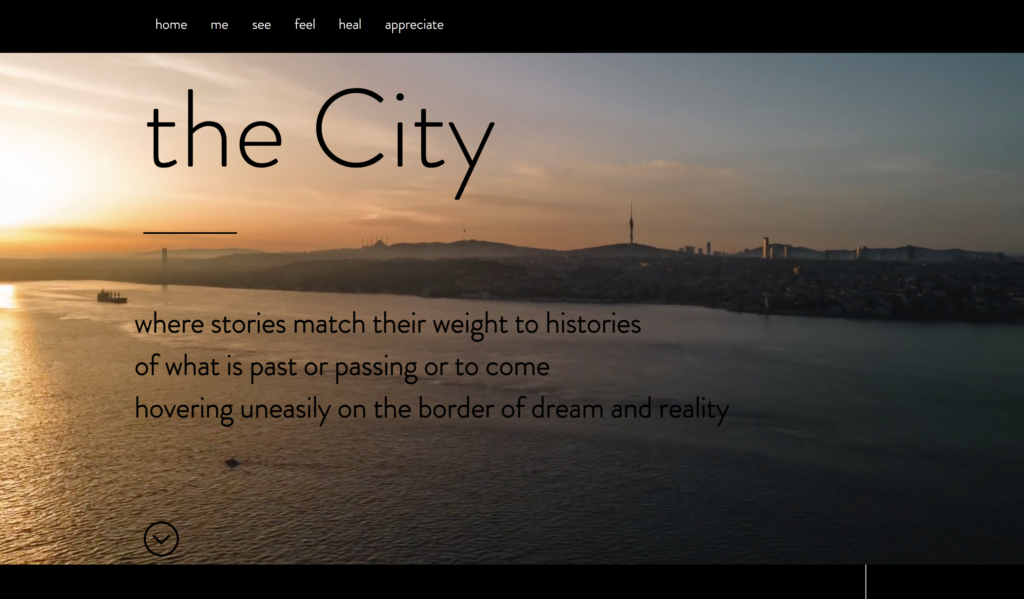
Mariatou Coulibaly ’23 (Africana studies, Anthropology and Sociology)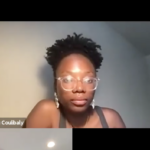
Mariatou developed a project about the New York City LGBTQ+ ballroom scene, examining specific categories within a ball which are glamorous reflections of how society sees or interprets queer and non-conforming bodies in public, and exploring its history through a diverse and detailed timeline.
CThe goal of this project is to identify how the construction of homes and families within the ballroom community uplifted and celebrated queer, trans, and gender non-conforming Black and/or LatinX youth in New York City.
Platforms and Tools used: Cargo, Google Voice, Instagram, Otter.ai, Tik Tok, Twitter
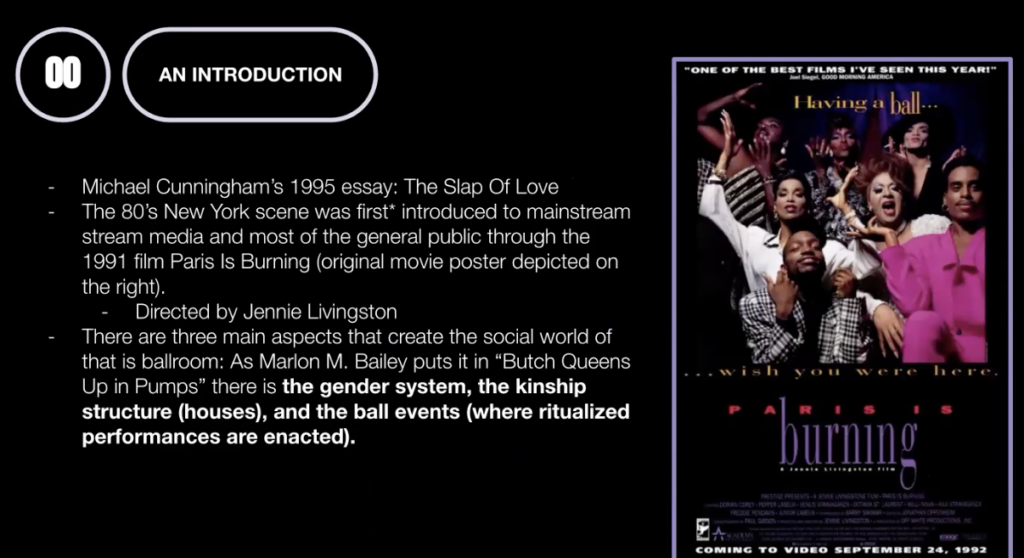
Isaiah Moore ’22 (Environmental Studies and Economics major)
Isaiah explored how gardening is used as a form of activism in Detroit’s black community. By reading the work of food scholars, studying historical activism in Detroit, and connecting with black growers in Detroit, they developed an understanding of how the visions of today’s farmers align with the visions of earlier activists. On their website, they try to illustrate these connections by analyzing a speech given by a prominent Civil Rights activist Grace Lee Boggs. What is presented is just one interpretation of the growing movement of black urban farmers in many cities across the nation today.
Project: Urban Agriculture and Activism: A Case Study of Detroit
My name is Isaiah Moore. While this is my personal story, it is by no means unique. Across the nation and throughout history black farmers have used land, water, and sunlight to build autonomy within their communities, and develop the capacity to make decisions about their own food. In this project, I will attempt to share one inspiring example with you. I started a garden in the summer of 2020, but I’d been planning one for years. At the height of the Covid-19 pandemic, my family and I grew squash, melons, beets, peppers, tomatoes, and herbs as a way to pass time, but also to have access to fresh produce when it was needed. What the garden represented for us was an opportunity to exercise some amount of agency over the foods we consumed within a food system that did not recognize this as a basic right for everyone. It had been my observation of this disparity that sparked my interest in gardening years prior.
Platforms and Tools used: R, Wix
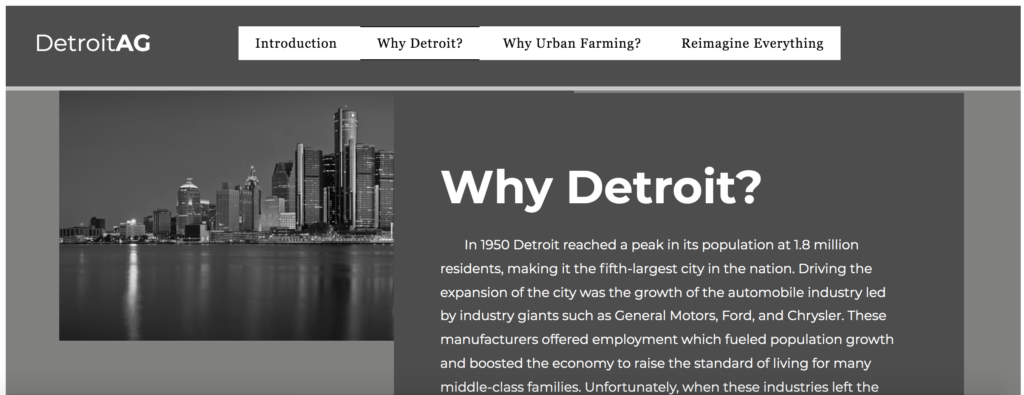
Olivia Newman ’22 (International Affairs major with an Environmental Studies minor)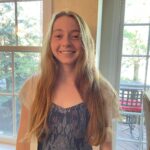
As a Jewish American, Olivia has always been interested in the way information about Israel and the Israel-Palestine Conflict are taught to Jewish children, and how that impacts their views on and understanding of the conflict as young adults.
Project: The Impact of Hebrew School Education on Young Jewish American Opinion on Israel-Palestine
As an American Jew, this issue has been an important aspect of my life ever since I originally learned of its existence. However, as I have progressed through my education and been exposed to varying ideas and world views, my understanding of the conflict has changed drastically, and I believe that many other young American Jews have had similar experiences.
Marisa Kabas, for instance, “a second-generation American Jew and granddaughter of a Holocaust survivor…was raised to unequivocally support Israel” (Kabas 2). However, after the Al-Aqsa Mosque, a Muslim holy site in East Jerusalem, was invaded in May of 2021, Kabas expressed her disdain for the country’s actions on Twitter. She was surprised by the response she received, which was:
“overwhelmingly affirmative…with fellow American Jews publicly and privately agreeing they’re no longer able to accept the party line on Israel-U.S. relations. They’ve been grappling with the version of Israel presented on trips organized by groups like Birthright versus what they’ve seen unfold on the ground, how to square their love for their people and history with their commitment to racial and social justice, and how Israel’s actions in Palestine seem to fly in the face of “tikkun olam” — the Jewish principle of improving the world through action” (Kabbas 4).
Clearly, many young American Jews are struggling to reconcile what they have been taught about Israel and the Israel-Palestine conflict, and the events they see occurring in real time. The goal of this project is to serve as a starting point for American Jews who were raised to unquestioningly support Israel and Zionism to begin to unpack those belief systems, and understand why and how they came to the conclusions they hold today. I believe that this understanding will be helpful in encouraging American Jews to explore the Palestinian experience over the last seven decades, and gain a better understanding of the Palestinian cause.
Platforms and Tools used: Scalar, Voyant (Cirrus)
Catherine O’Connor ’23
In this project, I studied the impact of individualism and collectivism as typical dimensions to describe eastern and western countries, using The United States and Indonesia to represent the East and the West, respectively, in my case study. COVID-19 emphasized that individualistic or collectivistic orientations impact both day-to-day life and tumultuous events. In this case: a pandemic. So, I asked myself: do the influences of collectivism or individualism within culture also extend to the actions and responses of federal governments? And did the response of the United States, as a historically, politically, economically, and socially individualistic country, differ from the response of Indonesia’s central government as a country deeply rooted in collectivism.
You will see that Americans and Indonesians are impacted socially and culturally by individualism and collectivism in this project. However, the responses and actions of former United States President Donald Trump and current Indonesian President Joko Widodo to the COVID-19 pandemic do not appear to have significant differences. Therefore, the cultural differences between individualistic and collectivist cultures are not reflected or extended in the actions of the federal government.
Platforms and Tools used: Scalar, TimelineJS, YouTube
Sarah Scally ’22
Sarah expands on her work scanning The Marquis Literary Magazine as a Digital Scholarship Services (DSS) assistant by finding eight poems, one for each decade the magazine was active in, that discuss the lives of students at the time, e.g. creating one’s schedule, finding love on campus, having fear around safety in the wake of tragedy, etc. She then used these poems as inspiration to write poems about modern student’s lives, using similar voices to the original narrators.
Project: In The Manner of The Marquis Literary Magazine
The Inspiration for this project has been the book Poems in the Manner of by David Lehman. In his introduction Lehman states “[he] had in mind the shibboleth that in the writing of poetry, to have a distinctive “voice” is everything. There is a counterview, demonstrated by Fernando Pessoa, inventor of “heteronyms,” that the poet should adopt as many names, personae, masks—call them what you will—as suits his or her personality.” This brought him to write a book with the inspiration of world-renowned poets, the ones on the cover for example.
Platforms and Tools used: WhatTheFont, Wix
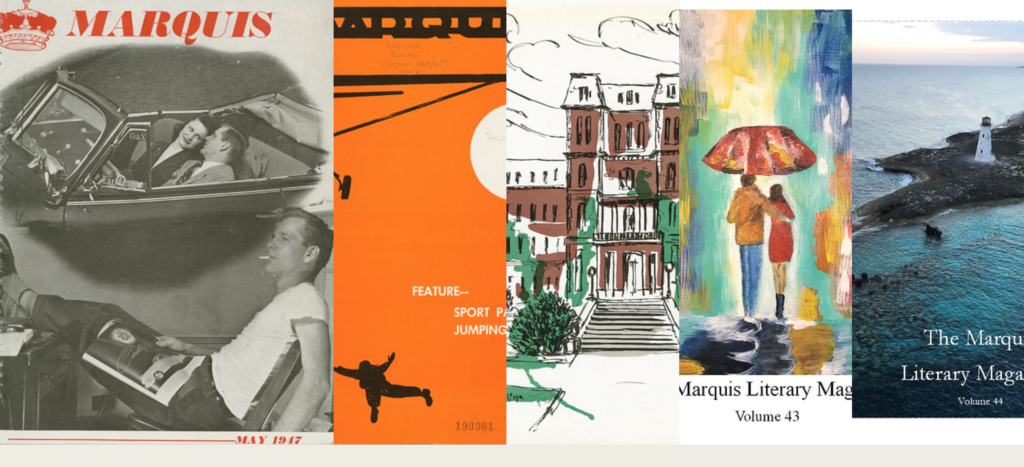
Ali Sultan Sikandar ’23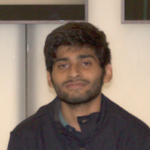
I am Ali Sultan Sikandar, a Computer Science major and a rising junior. My DHSS project is titled the ‘Unsung Heroes of the Indian Subcontinent Partition’ and it aims to pay a tribute to the forgotten heroes of the Partition through their preserved memories.
Project: Unsung Heroes Of The Indian Subcontinent Partition
The partition of the subcontinent was one of the major historical events of the twentieth century, and while the events leading up to it are documented well in many books across the globe, there are many stories that did not ever make it to the mainstream. Highlighting these stories is essential, since they not only let us experience the partition through the eyes of people who saw it firsthand, but also shed light on people who achieved feats of heroism without getting enough recognition.
These stories come mostly from oral interviews spread across the internet. The SOAS archive of Partition Voices, (https://study.soas.ac.uk/partition-voices-soas-archive/), the 1947 Partition Archive by Stanford Digital Library (https://www.1947partitionarchive.org/), and the book Partition Voices: Untold British Voices are the three most potent primary resources when it comes to extracting some great stories.
Platforms and Tools used:ArcGIS StoryMaps
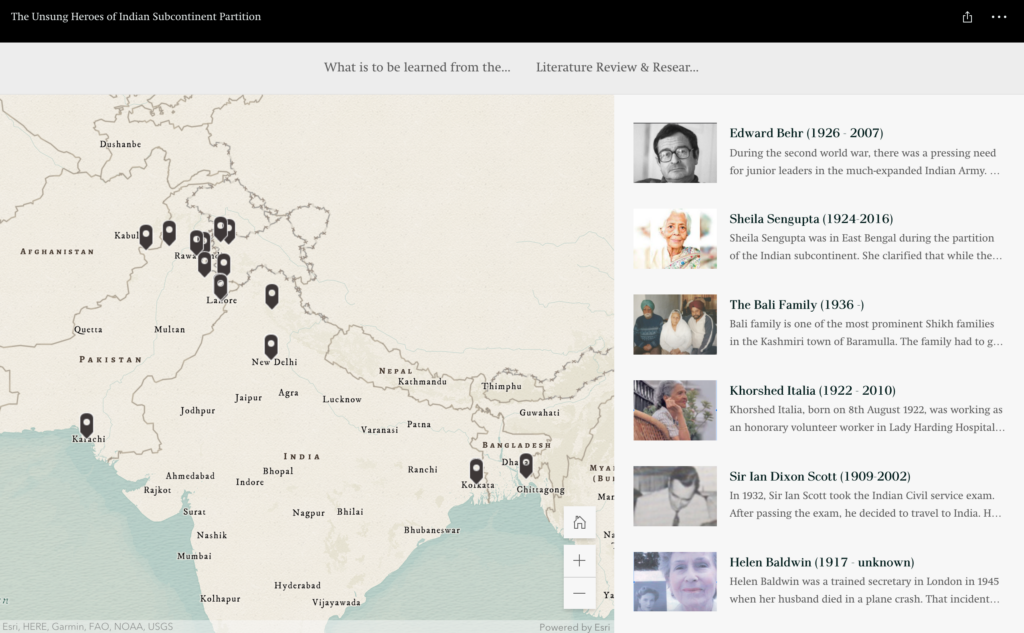
Saide Singh ’23
2021 DHSS Teaching Fellow
2020 Cohort & Projects 
Megan Deacon ’21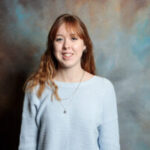
My name is Megan Deacon and I am a rising senior and history major. Since taking a WGSS class called ‘Women in the US Criminal Justice System’ I have been fascinated by the horrific state of the US criminal justice system, specifically how crime policies negatively and disproportionately affect women. Through my project I have explored how films that feature female criminals distort the reality of female criminality and women’s involvement in the US criminal justice system. I have enjoyed how the DHSS program has exposed me to new and different research methodologies, as well as introducing me to how data collection and analysis can be used to inform humanities and social sciences research.
Project: The Femme Fatalane and the Distortion of Female Criminality
In order to compare film with reality, I have collected my own set of data on films which feature characters that I would define as a femme fatale. For each film I have recorded the name of the film, the year it was produced, the name of the femme fatale character, the name of the actor playing the character, the ethnicity of the actor, whether or not the femme fatale character is the main character of the film, the crime/villainous act committed by the femme fatale, the method by which the femme fatale commits this act, the motivation for committing the act, and the repercussion for the femme fatale. As well as looking at this quantifiable data, I will also feature five case studies of different films, in order to explore the nature of female criminality presented by each film in more detail. Through this broad and detailed data I will explore if and how these films distort the reality of female criminality.
Finally, the ‘so what’ aspect of my project lies in the question ‘does it even matter if the femme fatale trope/character distorts the reality of female criminality?’ I will deal with this ‘so what’ aspect of my project by drawing on theory and arguments put forward by psychologists that deal with the connection between films and people’s/society’s beliefs and culture.
The key goal of this project is to expose the reality of mass incarceration and its effect on women, to people who may be unaware of how women interact with the criminal justice system. I want people to be interested by mass incarceration and women’s increasing contribution to it, so that they may go away and learn more. Finally, I want my readers to understand that one of the reasons they may not know much about mass incarceration and women in the system, is because the only interaction they have with it is through films which present crime to us as a form of entertainment.
Platforms and Tools used: Microsoft Excel, OpenRefine, Tableau, WordPress
Shirley Liu ’23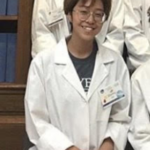
Shirley Liu is a rising sophomore at Lafayette College studying Philosophy and English. As a native resident of DC’s Chinatown, they have always been a firm advocate of affordable housing initiatives for the area’s residents. They hope the research they performed for DHSS will be the first of many projects investigating and platforming the voices of affordable housing residents in DC’s Chinatown.
Project: A History of Displacement and Development in D.C.’s Chinatown
“Gentrification” has morphed into a sort of buzzword nowadays, especially in the case of ethnic enclaves like Chinatown. The safest route of rhetoric for most is to condemn the displacement of low-income and minority residents, while begrudgingly admitting that the process has led to economic rejuvenation in previously stagnant areas. This is certainly the case for Washington, D.C.’s Chinatown; although many deride the downfall of this neighborhood, which once bustled with Chinese-American residents and now seems unrecognizable from any other downtown shopping center, people often concede that the area has seen an economic boom since the advent of redevelopment efforts in the 1970s.
However, I believe that this mode of analysis regarding the displacement of Chinatown’s residents is naive at best and outright dangerous at worst. While it is great to hear from members of the Chinatown business elite, many of whom do happen to be Chinese themselves, that redevelopment has been overall beneficial to the local economy, the voices of Chinatown’s low-income Chinese and black residents are missing from the conversation. Through my research, I aim to answer the following questions:
How have residents of affordable housing in the Chinatown area been affected by downtown urban revitalization efforts?
How has the local response to gentrification in Chinatown changed over time?
What does it mean to “save Chinatown?”Platforms and Tools used: GitHub, TimelineJS, Voyant (Cirrus)
Oyuntugs Gantumur ’23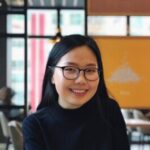
My name is Oyuntugs Gantumur, a rising sophomore at Lafayette College. I am majoring in Engineering B.S. with a thematic focus on Environment and Energy. I am passionate about food and how it affects our daily lives. The DHSS program has allowed me to explore and learn about food in a way I’ve never thought before. Through my project, I tried to answer what our food tells about our identity and also how the research focus in the food studies changed over time.
Project: The Evolution of Research Focus in Food Studies
At the beginning of the program, my project idea concerned the relationship between food pictures on social media and food business. With the rise of social media use, people started posting more food pictures on social platforms, especially on Instagram. I wanted to research how this trend on social media affects restaurant types in business, their income, and popularity. However, there was very little work done in this area, and the specific data on social media and restaurant types were unattainable, which led me to change my research topic.
Determined to explore food, I shifted my topic to “Food and Identity: What does the food on your plate say about you?” I was stunned by how much our food says about us that I didn’t expect. As reading works related to food studies, I wanted to examine how the research focus of food studies changed over time from the 1950s to the 2000s. Through this research, I aimed to answer the following questions:
What does the food on our plate say about our identity?
How did the research focus of food studies change from the 1950s to the 2000s?Platforms and Tools used: Google Scholar, Microsoft Excel, Voyant, WordPress
Saide Singh ’23
My name is Saide Singh, a rising sophomore at Lafayette College. I am majoring in Engineering B.S. with a thematic focus on Environment and Energy. I am passionate about food and how it affects our daily lives. The DHSS program has allowed me to explore and learn about food in a way I’ve never thought before. Through my project, I tried to answer what our food tells about our identity and also how the research focus in the food studies changed over time.
Project: Indo-Guyanese Women Poets
Rarely, if ever, are Indo-Guyanese women poets discussed without the mentioning of Rajkumari Singh,Shana Yardan, and Mahadai Das. Although the absence of other women poets is not necessarily the fault of scholars and historians, my project aims to uplift well-known voices in addition to contemporary poets Janet Naidu, Sharleen Singh, and Natalia Surujnath. My exploration of well-known poems in conjunction with contemporary poems has allowed me to traverse reimaginings of post-revolutionary Guyana (from 1968 onward). Of course, these women’s voices do not speak for all Indo-Guyanese women writers, but it is important to realize that the inner and external turmoil realized in their poetry characterize the quotidian realities of being an Indo-Guyanese woman living in a formerly colonized space. Close analyses and critical focus on these poems highlight each women’s beckoning towards a post-revolutionary Guyana that realizes its fault as a disunified nation.
The poems displayed on my website are accompanied by audial and visual affordances that preserve this tradition of creative expression. Each poem has an audio file of me or my sister, Sophia Singh, reading out each poem. The audio clips are annotated so that readers can follow along. The titles of each poem are linked to separate pages that act as footnotes, highlighting significant themes and giving short definitions of cultural terms. Housing supplementary information on a separate page was an intentional choice that allows the readers to interact and read the poems for their lyrical, rhythmic, and literary movements apart from trying to understand all the cultural and historical references at once. My biggest hope is that this digital space serves as a salient reminder that Indo-Guyanese women have created literary imaginings and produced beautiful art: their work deserves to be recognized and displayed.
Platforms and Tools used: Scalar, Voyant (Cirrus)
Imane Halal ’23 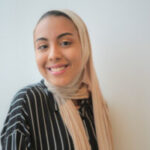
My name is Imane Halal and I am a student at Lafayette College. I am a rising sophomore majoring in Sociology and Women and Gender Studies. My hobbies include writing poetry and reading.
In my research I look at the social geography at Lafayette College by further analyzing how certain spaces at Lafayette College are racialized. In order to do so I analyze Lafayette College as an institution, and further assess how physically racialized spaces affect how Black and Brown students experience them, and what physical spaces they actually have access to.
This further allows us to understand how institutions that uphold racism further participate in producing racialized experiences. I do this by using several analyses provided by social geographers, and utilizing a map as a way to conceptualize this.
Project: The Social Geography of Lafayette College
When I first began this project I had a very different goal in mind. I thought I would be simply analyzing data about Black spaces at Lafayette. Then, I realized that I wanted to look at the institution at large and how the change in spaces affects larger policies of diversity and inclusion. While doing my original annotated bibliography I realized I felt a disconnect to where my project, and the sources I had gathered in relation to processing the data. After, doing some other readings I realized what I actually wanted to look at is the social geography at Lafayette College. Certain spaces at Lafayette College are racialized which further affects what Black and brown spaces look like at Lafayette College overtime. Overall, my goal is to analyze the social geography of Lafayette College as an institution, and further assess how physically racialized spaces affect how Black and brown students experience them, and what physical spaces they actually have access to.
In order to further study this I have looked at several academic sources about the social geography of institutions. Before I could analyze Lafayette College I first had to understand how I can understand Lafayette College as a racialized space, and what that further means. I also looked at sources from intersectional feminists, because the theory of social geography within itself is very racialized. In order to make sure that I am able to look at Lafayette College through this analytical framework. After, realizing that I was able to specify how I wanted to study Lafayette College as a space. In relation to my data, collected from ABC archives, I first organized my data on a Google document. Afterwards, I was able to transfer the data into an Excel spreadsheet to make it easier to map. After recording my Data I had realized that it was not organized enough, so I have spent some time breaking my data down into smaller pieces, so that larger themes are easier to understand.
Throughout the duration of this project I used the Association of Black Collegians (ABC archives) in order to retrieve my data. Along with that I have used the work of previous ABC archive members in order to really build a strong foundation for my data. In order to organize my sources I used an excel spreadsheet. This assisted me in organizing my data for the digital StoryMapJS Knight Lab. (See the Black Spaces at Lafayette College StoryMap here).
Platforms and Tools used: Microsoft Excel, StoryMapJS, WordPress
Rachel Cox ’21 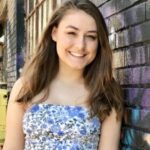
My name is Rachel Cox, and I was born and raised in Easton, Pennsylvania. At Lafayette College, I am pursuing a double major in Government & Law and Women’s, Gender, and Sexuality Studies. I am a member of the class of 2021, and enjoy spending time educating myself and others on social justice issues through my involvement in Kaleidoscope. My passions include traveling and exploring the histories and cultures of countries around the world. In the future, I aspire to earn my JD and to work primarily with international law. I also would love to continue the research that I have started with the DHSS program, as my studies on women’s involvement in the Greek Civil War allows for my interests in politics and gender studies to intertwine.
Prior to collecting resources, my project idea concerned the concepts of honor and shame, which were used to organize society in Greece until the late 20th century. These ideas rested on a gender binary and entailed the subordination of women in Greece. However, the literature produced on this topic is very minimal and could not be used to answer the questions I had posed. Despite needing to change my topic, I was determined to discuss the gender status quo of Greece in some form.
Based on the sources I collected, I altered my topic to discuss women’s involvement in the Greek Civil War. I was stunned by their active participation in the Greek Resistance against the German occupation, and how their efforts persisted during the Greek Civil War. Thus, my research seeks to analyze how the mass mobilization of women on behalf of the Communist Party of Greece (KKE) disrupted and altered the social position of women in Greece. Another aim of mine is to discuss the impact of women’s contributions in the war, and to examine how the KKE promoted the advancement of women’s issues through their political initiatives and their intentional recruitment of women. Through researching their participation in both wars, it is evident that the mobilization of women by the KKE aided in their sustained efforts in the wars.
In order to display my data efficiently, I am utilizing this WordPress website and a timeline I have created using TimelineJS. The timeline will be utilized to enhance the information being presented in the WordPress website.
Platforms and Tools used:TimelineJS, WordPress
Songmouy An ’22
Songmouy will research Khmer (Cambodian) classical dances and how the dynamics of major historical events such as 17thcentury French colonization, the Khmer Rouge, and the 21stcentury globalization of technology have contributed to the evolution of these classical dances in terms of gender, using available sources such as literature, photos, and videos, such as documentaries.
Project: Khmer Classical Dance in Pop Music
Khmer Classical Dance has a long history that is heavily associated with religious belief, monarchy, and the state. The dance got listed as UNESCO’s intangible cultural heritage of humanity in 2003. However, the art form almost went extinct under the Khmer Rouge rule from 1975-1979. Surviving artists have tried to revive the art despite many difficulties due to a lack of human resources, funding, and interest from the younger generation. There seems to be a generation gap between Cambodians born prior to Khmer Rouge and Cambodians who are born after when discussing the discourse of the dance. A phenomenon that is happening in Cambodia today is the inclusion of Khmer Classical Dance in pop music. The hypothesis is that what we see today is the direct and indirect impact of the Khmer Rouge regime, which lasted from 1975 to 1979.
The main purpose of this project is to study the causes that may have led to the acceptance of the inclusion of Khmer Classical Dances in Pop Music. First, an overview of the history of Khmer Classical Dance from when it was first recorded up until 1970 will be provided. Then, the impacts of the Khmer Rouge regime will be discussed along with its implication decades later. After that, sentiment analysis and topic modeling will be used to study the reactions of Cambodians, who are presumably born after Khmer Rouge, towards the use of Khmer Classical Dance in Pop music.
Platforms and Tools used:Omeka S, YouTube, R
2019 Cohort & Projects 
Milena Berestko ’22 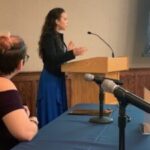
My name is Milena Berestko and I am a Psychology and Theatre student at Lafayette College. I am passionate about playwriting and acting, and other forms of artistic expression. I aim to utilize creative techniques to tell the story of internally displaced and discriminated people, as well as address the current ignorance of the anthropogenic causes of climate change. In my research, I focus on prejudice and utilizing art as a practice to heal from traumas and educate upon the history of one’s country and heritage.
Project: The Mosaic of Romani World
PCalled “Gypsies” for centuries, their proper name are Roma people. “Gypsy” signifies a ‘descendant from Egypt, with that being said, the moniker “Gypsy” is a derogatory, and an inaccurate term to describe Romanies and thus should be avoided. The word “Gypsy” will not appear in this website outside the historical sources and other references that date before the establishment of the First Romani Congress in 1971 that put front a demand to internationally address Roma by their true name (Puxon, n.d).
I have begun my research with the question: “How did Roma people influence the Polish legislature and art?”. I soon realized that there is little to no literature that explores the impacts of Roma in countries they reside, instead, scholars discuss their marginalization and present them as a distinct group of people diverting from the societal norm. In writing, many exoticize Roma and examine their poverty looking at them as vanguards of the community. Regarding Romani history, one of the most widely discussed topics is Parrajmos, (“the great devouring”; the Romani Holocaust). Information about Roma in the Holocaust is often discovered by Jewish scholars. There are only a few Roma representatives in the historical field that openly challenge the stereotypes imposed on Roma and correct the misinformation existing in the literature. One of those prominent scholars is Ian Hancock, who speaks about the Romani Holocaust, belonging to Roma nation, and addresses the differences in ‘nation-hood’ between different Roma tribes.
Upon reading documents decreed in Nazi Germany in the years 1933-1945, I wanted to analyze the particular laws produced to annihilate Roma and investigate their contribution to modern-day discrimination. Unfortunately, I could not access the original transcripts of the documents thus I decided to aggregate the information I found about Roma people and address the current gaps in the literature. I hope that this project will serve as an overview of issues and critical topics to ponder if one wants to go into the field of Romani studies and expand upon the limited knowledge we have about this ethnic minority.
Platforms and Tools used:Roma Online Visual Tool, WordPress
Bec Stargel ’20 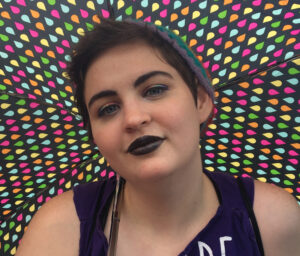
I’m Bec, and I’m a rising senior studying Anthropology & Sociology and Psychology. I’ve always been interested in learning more about LGBTQ+ history, which is often left untold, and bringing queer experiences and ideas into academia. In my research for this summer, I explored three questions. How was the word transgender first introduced? How has it changed since then? And how exactly are people defining this word? I explore these questions through both a review of the literature and an exploration of definitions of the word “transgender” provided in academic texts from 1980 to 2010. In the fall, I will be joining the team on the Queer Archives Project, thus continuing to research LGBTQ+ history and ideas through the lens of digital humanities.
Project: Defining “Transgender”
As can be seen in the number of letters in the LGBT(QUIA+) acronym, there is an abundance of language, labels, and identities associated with this community. This language is not only vast, but constantly changing; words that used to be widely used and accepted, such as transsexual, are now often viewed negatively, while words like queer have been reclaimed by many. In a context where labels are so important, where they can give not only a name but also a sense of community for those who choose to use them, exploring the history behind these labels is valuable.
At the beginning of this six-week intensive research project, I didn’t know exactly what I wanted to do, but I knew that I wanted to explore the creation and evolution of these words, specifically those words surrounding trans* identities. After a lot of thinking and reading, I finally landed on a set of questions to explore. How was the word transgender first introduced? How has it changed since then? And how exactly are people defining this word?
Platforms and Tools used:GitHub, Google Scholar, HTML5 UP, Publish or Perish, Timeline JS, Voyant
Victoria Puglia ’21 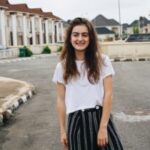
I am a rising junior at Lafayette College studying International Affairs and Religious Studies. I was born and raised in Barcelona, Spain; but moved to the Netherlands with my family for High School. I am a really active and involved person. I love travelling and learning about different countries; I was lucky to visit Nigeria and Ethiopia this summer! After college I would love to pursue further education in either nutrition, global public health, conflict, and humanitarian emergencies (or somehow find a way to combine them all).
Project: Disarmament in South Sudan
I decided to explore the disarmament campaign in South Sudan as well as the role of disarmament in the perpetuation of violence in South Sudan. While there is literature on disarmament initiatives and the failures of disarmament, there is a lack of research on the implications of that failure. The literature also focuses more on analysing the outcome of disarmament rather than on the process that took place in the interim period between 2005 and 2011, and before the civil war in South Sudan broke out in 2013.
Ultimately disarmament in South Sudan failed in the period between 2005-2013. It is important to understand the failures of disarmament and the implications to avoid making the same mistakes when the South Sudanese Civil War eventually comes to an end. Furthermore, this study will explore the relationship between geography and disarmament, which is an analysis distinct to what currently exists in the literature.
Platforms and Tools used:Adobe Premiere Pro, ArcGIS, Tiki-Toki Timeline Maker, Video Scribe, Visme, Wix
Aidy Ung ’21 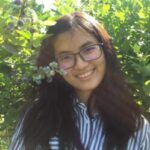
Aidy Ung is a student from Cambodia and a Civil and Environmental Engineering major at Lafayette College. She has always been interested in learning more about architecture and water system of Angkor, an ancient city of Cambodia. In addition, Aidy also finds Hindu and Buddhist mythology fascinating. Her digital humanities project is an opportunity for her to combine two of her interests and explore many more.
Project: Hindu-Buddhist Architecture in Angkor City
I decided to explore the disarmament campaign in South Sudan as well as the role of disarmament in the perpetuation of violence in South Sudan. While there is literature on disarmament initiatives and the failures of disarmament, there is a lack of research on the implications of that failure. The literature also focuses more on analysing the outcome of disarmament rather than on the process that took place in the interim period between 2005 and 2011, and before the civil war in South Sudan broke out in 2013.
Ultimately disarmament in South Sudan failed in the period between 2005-2013. It is important to understand the failures of disarmament and the implications to avoid making the same mistakes when the South Sudanese Civil War eventually comes to an end. Furthermore, this study will explore the relationship between geography and disarmament, which is an analysis distinct to what currently exists in the literature.
Platforms and Tools used:ArcGIS, Esri Story Maps, Voyant (TermsBerry, Collocates)
Tafita Rakotozandry ’22
Tafita Rakotozandry is focused on the issue of electricity access in Madagascar, and will investigate how energy poverty impacts the education and future of rural children in that country.
Project: Household Electrification and Education Performance in Madagascar
In 2011, Dr. Karen Rajaona Daka and Prof. Jerome Ballet (University of Versailles Saint-Quentin) have led research in Antsohihy, a town in the North of Madagascar in an attempt to understand the direct effect of electricity access on local education. These researchers were surveying 162 children of this town for that purpose.
Their findings proved that kids who were raised in electrified households have more time to focus on their study at night and as a result, they performed better in school. This seems like a logical conclusion because, with a population whose traditional life includes no access to electricity, daily life activities depends on the solar cycle. However, after the arrival of technology, nighttime becomes more viable as activity timeFor female students especially, it is also a big life improvement because they will have more time to commit to their study. Effectively, female students are more likely to be subjected to do housework compared to boys. Their duties include to fetch water for the family, help the mother to cook, take care of the babies, etc… With a longer time to study, they can focus more on their school assignment and be more successful in class. In other words, home electrification leads to less gender inequality in term of education.
Platforms and Tools used:ArcGIS, Esri Story Maps
Joseph Illuzzi ’21
Joseph Illuzzi will examine factors contributing to labor inequities in the eSports industry, and illustrate the historical progression of labor conditions and showcase the highly visual nature of games like Counter Strike: Global-Offensiveand League of Legends through digital tools like TimelineJS.
This project seeks to showcase the issues that professional eSports players face, focusing on the professional North American League of Legends scene as a case study. The struggles players face in terms of unionization, employee classification, asymmetrical market information, unjust competitive rulings, and related topics will be emphasized.
Platforms and Tools used:Github, HTML5 UP, Timeline JS
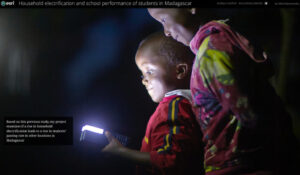
Ren Makino ’20 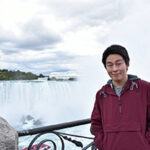
Ren is currently a senior at Lafayette majoring in International Affairs and Asian Studies. He is interested in the related topics of Japanese citizenship, imperialism, and political ideologies. The DHSS project sparked his interest in the entanglement of urban historiography and intellectual history. During his free time he helps build personal finance curriculum for a non-profit.
Project: 66 Images of Tokyo: Postcards from the Magazine Shufu no Tomo (主婦の友)
This set of postcards came as a ‘special gift’ (付録) with the September 1932 edition of the magazine Shufu no Tomo (主婦の友, 1916-2018). As the title translates to Housewives’ Companion, the magazine was targeted towards young, urban, middle-class housewives but was also enjoyed by factory workers and those from rural areas. Each postcard was assigned a number from 1-66; the number is reflected on the red points. Points 67-70 in purple are the advertisement cards that came with the set and point 71 in blue is a short conclusion for this project. In the text box for each point is the English translation of the description from the back of the postcard followed by the original Japanese description. This project is an example of how postcards, including those already in Lafayette College’s East Asia Image Collection, can be displayed on a digital map.
1/24/20 PROJECT UPDATE: Ren visited 60/66 of the postcard locations from his digital research project over the holiday break. He is working on updating his website with the images of the current locations. Right now, the image comparisons can be seen in a rough format here.
Platforms and Tools used:ArcGIS
2018 Cohort & Projects 
Norman Lee ’19
Norman intends to use digital tools like IssueDiscovery, SentiStrength, and Jigsaw to identify and define the “zeitgeist” for countries with the highest social media usage through analysis of the associated demographic data.
Project: Communication Deficits Between Fields Integral to the Epistemology of Sentiment Analysis
PCalled “Gypsies” for centuries, their proper name are Roma people. “Gypsy” signifies a ‘descendant from Egypt, with that being said, the moniker “Gypsy” is a derogatory, and an inaccurate term to describe Romanies and thus should be avoided. The word “Gypsy” will not appear in this website outside the historical sources and other references that date before the establishment of the First Romani Congress in 1971 that put front a demand to internationally address Roma by their true name (Puxon, n.d).
One of the core questions within the Digital Humanities analysis of social media is how to extract social attitudes from the target media without close reading. However, in order to answer this question, it seems we need to answer two others: what is a social attitude and how is it instantiated in social media? Answers to these two questions may inform researchers about the development and characteristics of public moods (long term vs. short term, high amplitude vs. low amplitude) as well as their distribution and interaction throughout different social medias (academic social medias vs. more popular social medias).
Answers to these questions would, in turn, increase the accuracy of Digital Humanities analyses of public attitudes by allowing for a principled way to create more precise research questions as well as extract and apply the implications of their answers. Plausibly, ontological analysis also provides complimentary utility to linguistic analysis by giving us the basis to discover information about idiosyncratic use of interesting terms within populations (for example, how different is usage of the same academic terms in academic circles vs. the news that reports them) and their variations on possible sentiment spectrums (for example, high affect may have a different implication on twitter or Facebook vs. in business correspondence).
Platforms and Tools used:Gephi, Scalar
Uchechi Anomnachi ’19 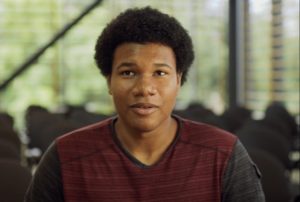
I’m Uche, and I am a Senior Anthropology/Sociology major. My digital humanities research centers around the racial history of anime in the United States, using digital methods to both trace and represent that history. As a student of culture, I am constantly observing even trivial aspects of the world around me. When given the opportunity to explore these observations, anime which existed as a part of my world from a young age seemed to be a good way to explore the intricacies of race and gender in pop culture communities. The simple question of “why do my black peers seem able to unabashedly enjoy anime more than my white ones?” came from a lifetime of observation and culminated in my digital humanities summer research project.
Project: Racial Perceptions of Anime in the United States-
I uncovered two distinct histories of the diffusion of anime into the United States: one for Black Americans, and another for white Americans. The central question I sought to answer is: how do these different traditions of consuming anime inform how these populations understand and regard anime? To answer this I studied the unique cultural productions of these groups with regard to anime, hoping to uncover larger trends that relate back to the established historical context of their consumption. In establishing such a historical context I connect white anime consumption in America back to science fiction fandom in the 1960s and 1970s and find that being born from that tradition, many of their cultural productions were the same.
Fan-zines, conventions and club bulletins became central to how white fans engaged with anime similar to their role amongst science fiction fans. I also trace the feminized ‘nerd’ stigma that was attached to both of these groups in the public consciousness as a result. For my analysis of white cultural productions surrounding anime, I chose to focus primarily on fan-zines and bulletins as they provided a rich body of texts and connected directly back to their science fiction predecessors. I trace a different history for Black anime consumption relating back to the eminence of Hong Kong action cinema, Samurai films, and other East Asian media in the Black community.
I found that hip hop became a major site where Black people engaged with these styles, differentiating their consumption from that of white fans in a few major ways. I analyze hip hop lyrics to construct my argument about these distinct ways anime consumption manifests in the Black community. What was striking was how these different traditions of consumption of Anime are so intimately connected to discourses of masculinity and femininity, isolation and community.
Racial Perceptions of Anime- Lafayette College News video, February 24, 2019:
Uche Anomnachi ’19 talks about his research, sponsored by the Lafayette Libraries’ Digital Humanities Summer Scholars program, on the differences in how black and white Americans have responded to the Japanese artistic medium of anime.
Platforms and Tools used:Rap Stats by Rap Genius,Timeline JS, Tumblr, Voyant (Cirrus)
Ben Gordon’19 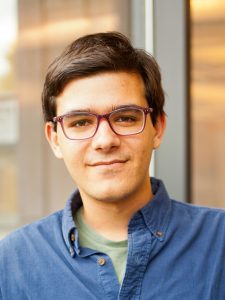
Benjamin Gordon is a native New Yorker majoring in Data Science and Music, whose project focuses on mapping the history of transportation in 20th Century New York City.
Project: New York City’s Subways, Bridges, Highways, and Expressways in the 20thCentury
New York City has a subway problem. The famed mass transit system that has received much literature and love from many New Yorkers over its 100 plus year history is now the recipient of scrutiny from the city’s residents and newspapers. A New York Times investigation found that the New York subway system has the worst on time performance of any major rapid transit system in the world, at 65%. Yet subway ridership is at its highest since the 1940’s, as more people than ever rely on their services to get from place to place. As the city plans to fix and repair what is causing these issues, the historical context for the subways is as important as ever to understand.
Why, for example, are there parts of the city that are overrepresented by train lines versus others that have very few? Because this is American history, is there a connection between race and socioeconomic class with the location of subway lines? Within the history of mass transit and urban planning in New York, public policy emerges that has shaped why the subways are the way they are today, especially policy of the famous master builder of New York, Robert Moses. I propose mapping both the building of the subways and Moses’s highways, bridges, and parks alongside city demographics at their respective times to investigate how race and class influenced the city’s decisions.
Uncovering the Political History of the New York City Subways – Lafayette College News video, October 30, 2018:
Ben Gordon ’19 talks about his digital humanities research on the development of New York City’s subway system, particularly how subway locations were determined and why the city stopped investing in them.
Platforms and Tools used:ArcGIS, Esri (Story Maps)
Elene Jalagonia ’20
Elene is focused on visualizing political, cultural, and societal tools (including cultural artifacts like newspapers) that might have provoked ethnic conflict, stoking the Abkhazian and Ossetian secessionist movements in the country of Southern Caucasus Georgia.
Project: Making of Ethnic Nationalism
The question of nationalism has been overlooked in political science and philosophy as a relic from the past and the characteristic of the old nation-states. Nationalism began attracting scholars’ attention in the late nineties when the nationalist conflicts in the former Yugoslavia, Post-soviet states and Rwanda resulted in the massive loss of lives and displacement of thousands of people. The question remains relevant even today as we observe the unexpected surge of populism and nationalist tendencies across the globe, which promote seclusion and othering of the distinct ethnic groups and nations, simultaneously, hampering international economic, cultural and political interconnectedness.
This project sheds light on the nature and formation of an ethnic nationalism in post-colonial and post-communist spaces based on a case study from Abkhazia, a breakaway region in Georgia. It aims to trace the development of the nationalist sentiments among the ordinary Abkhaz people and examine the ideological discourse led by the external colonizing power, the Russian Empire and the Soviet Union.
Therefore, the project employs digital tools to answer two basic questions: how the nationalist sentiments developed in the Abkhaz public discourse? and is there any evidence for the existence of the colonizer’s discursive ethnic politics which might have contributed to the emergence of a new nationalism in the colonized state?
Platforms and Tools used:ArcGIS, Voyant (SteamGraph)
Trang Lee ’21 
As a Computer Science and English double major, I am naturally drawn to the Digital Humanities Summer Scholar Program. For my project, I chose to explore the narratives in diasporic literature, specifically in the Night Sky with Exit Wounds poetry collection by Vietnamese-American author Ocean Vuong. While I used traditional close reading to study Vuong’s autobiographical self and his choice of poetry as a genre, I turned to distant reading methods, such as text analysis and word frequency mapping, to discover recurring thematic binaries and hybrid linguistic trends in Vuong’s poetry collection. Apart from being a memorable summer project, DHSS has been an enjoyable opportunity for me to navigate the intersecting potentials of my academic majors.
Project: Intersection of Hybrid Identities in Ocean Vuong’s Diasporic Poetry
Authorial identity in the written discourse is defined by textual features of the writings as well as personal beliefs and perceptions of the writer about social values. The purpose of this research is to delineate the authorial identity of Vietnamese-American writer Ocean Vuong through research of his life history and textual analysis of his poetry collection, Night Sky with Exit Wounds.
Traditional close reading of the poetry collection was supplemented by distant reading of diction trend, word frequency, and data visualization using Voyant, an online text analysis website. Final findings along with analysis discussion of the results were presented in the digital format of an online website.
Platforms and Tools used:GitHub, HTML5 UP, Voyant (MicroSearch, TermsBerry, Trends)
Alex Murrell ’19 
Alex will perform text analysis of the 15thcentury treatise on witchcraft, The Malleus Maleficarum (“The Hammer of Witches”) using text mining or topic modeling tools like MALLET, in addition to art analysis of its accompanying illustrations.
Project: Volatica
Volatica is an ongoing project working to compare the artwork surrounding the witch trials with major texts and treatises from the era. As of June 2018, the project utilizes the Malleus Maleficarum and work from Albrecht Dürer, Hans Baldung, Johann Otman, Erhard Schoen, and Francisco Goya to gain insight into the works themselves, the attitudes of the public, and the political climate surrounding the witch trials.
Beginning in the late 14th and early 15th centuries, central Europe found itself in a state of growing hysteria as the tenets and values of the Catholic Church were called into question by early reformers like Jan Hus, a Czech theologian, and Girolamo Savonarola, an Italian Dominican friar.Several members of the Catholic Church, including Pope Innocent VIII, felt one reason for the growing undercurrent of heresy in the masses was caused by willing and unwilling collusion with the Devil and his subordinates.
Platforms and Tools used:GitHub, HTML5 UP, Voyant (MicroSearch, TermsBerry, Trends)
Angela Shi ’21 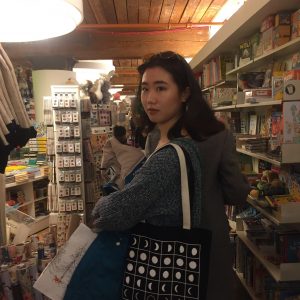
As a double major in Computer Science and Comparative Literature, participating in the DH program this past year has helped me explore the possibility of connecting the two seemingly unrelated fields. My project focuses on how the Muslim people were depicted by medieval Latin Christian and Jewish pilgrims to Jerusalem in their travel writings. I was able to use, in addition to traditional close reading, tools of text analysis on my corpus of texts to examine their content. After deciding on a list of target words related to the Muslim people, I implemented different tools to generate word frequency, collocation of the target words, and topic modeling to groups words that tend to appear near each other. The result indeed shows a growing objectivity toward the Muslim people and self-reflection in the travel writings which confirms the enlightenment and modernization of European society in the 15th and 16th century.
Project: Travel Writings of Jerusalem in the Middle Ages
My digital humanities project focuses on how the Muslims were depicted in the travel writings of European non-Muslim travelers to Jerusalem in the Middle Ages. Because of the significance of Jerusalem to Latin Christianity and the fact that it was dominated by Islamic authority from the 700s to the 1500s, European travel writings of Jerusalem could serve as a lens through which we examine the religious and cultural interactions between followers of medieval Christianity and Islam, the two most “antagonistic” Abrahamic religions throughout history. Also, seeing how travel writings have connected the Crusades to Jerusalem and also how, on the other hand, they indicate an increasingly self-reflective perspective of the writers could shed light on the religious and intellectual lives of the medieval Latin Christians that gave rise to the humanist movement of Renaissance and further modernization of Europe.
Platforms and Tools used:AntConc, MALLET, RAW Graphs, Voyant, WordPress
2017 Cohort & Projects 
Maria Ahmed 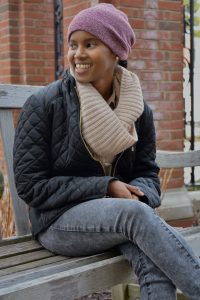
Maria Ahmed is a rising sophomore at Lafayette College majoring International Affairs. Coming from Somaliland, she is very interested in exploring topics close to home to contribute to the limited discourse about her home country. She naps a lot, and her least favorite part of the day is when her alarm goes off in the morning.
Project: Somali Refugee Secondary Migration- Maine and Minnesota
Fleeing home as result of the horrific results of the civil war, many Somalis ended up in refugee camps or were resettled in other countries as refugees. The United States is one of the countries that offered third country resettlement to Somali refugees. After their initial placement, Somali refugees in the United States tend to live or move to places like Maine and Minnesota as secondary migrants. This project explores the leading causes why Somali refugee secondary migrants move. By looking in to the personal stories of selected Somali refugees, this project shows recurring reasons that lead to Somali refugee secondary migration.
Jovanté Anderson
Jovanté Anderson is a lover of all things Beyoncé and hopes to someday meet her so he can perform for her his very own rendition of her album, Lemonade. He is currently pursuing a double major in Anthropology and Sociology as well as in English with a concentration in Literature. As a young poet, he is always trying to learn more about his craft and how he can use it to impact the world, or at least, make a mockery of it. Being from Jamaica, where the island breeze sings like poetry, he spends his spends his everyday navigating always-interesting, mostly-amusing American spaces that do not always feel like home, but always feels like adventure
Project: A So Mi Like It: The Dancehall As A Space of Empowerment for Working Class Women
The verdict on dancehall as a space of empowerment for working class women is always in contention depending on whom you ask. For some, it is a space that unrelentingly denigrates women. For others, it is a space for feminist liberation. The truth, however, is somewhere in between. The space’s duality forces us to reckon with the complexity of histories of colonial violence, globalization, and diaspora and the way they play out in cultural expression. Using Afro-Caribbean and other black feminist schools of thought, this project aims to challenge simplistic representations of dancehall as only (dis)empowering for Jamaican working class women by examining moments within the space that speak to the complex manner in which their daily lived experiences manifest. I am interested in alternatively arguing for what I call a politics of negotiation.
Tedi Beemer
Tedi Beemer is a rising sophomore at Lafayette College. She enjoys Kenneth Branagh movies, too much sugar in her tea, and reading the newspaper. She is pursuing a double major in Government/Law and Philosophy with a minor in Russian language. She greatly dislikes mushy pasta.
Project: Depicting Disability on Reality Love TV
Love and dating reality television hardly provides an accurate or diverse slice of its represented population. The average American reality show features a cast far whiter, more upper-class, more able-bodied, and more attractive than a truly random populous sample would produce. Disability, underrepresented on all forms of television, is depicted in a similarly disappointing fashion on reality love television. Those with disabilities are underrepresented, misrepresented, and exploited on these television programs which, in turn, perpetuate stereotypes about disabled aromanticism and asexuality. This project explores the importance of representation and the power of media while tackling troubling myths about disability.
Daniel Gonzalez
Daniel Gonzalez is an Engineering Studies and International Affairs double major from the Class of 2019. He is interested in ways to improve educational systems to include a greater sense of purpose and analysis in and out of the classroom. As an international student he also attempts to bring a greater understanding of Colombian culture to campus. Cooks mushy pasta.
Project: Stratification: A story of government segregation in Bogotá, Colombia
Stratification (estratificación socioeconómica) is a public policy developed in Colombia that classifies residential areas into strata through physical appearance. The purpose of this policy is to subsidize the cost of domiciliary public utilities for the low-income population (strata 1, 2, 3) using the contributions of the high-income population (strata 5, 6). This article examines stratification and many of its unintended consequences in Bogotá and lays down a framework in visualizing the history, causes and consequences of this controversial policy through the development of a digital project using ESRI’s Story Maps.
Ben Minerva
Ben Minerva is a rising senior at Lafayette College majoring in History and minoring in Art who is particularly interested in the early modern period. He is from New York City but has an enthusiasm for the outdoors and is currently reading the Harry Potter Series for the first time.
Project: Sephardic Diaspora After Inquisition
In 1492, the Spanish Inquisition officially started marking the beginning of the expulsion of Jews from Iberia. As a result, Spanish Jews were forced to either convert to Christianity, flee their homes, or face persecution. This project tracks the migration of Spanish Jews from Iberia to the Ottoman Empire, the most common destination for Jewish refugees. The central substance of this investigation is a mapping that not only illustrates the Sephardic migration, but also tells the story of tolerance. Through displaying primary source accounts that describe the events or circumstances of a specific location and date, this map not only investigates the difference between Judeo-Christian and Judeo-Islamic tradition that materializes, but also explains why this difference existed.
John Rodriguez
John Rodriguez is a rising junior at Lafayette College. He is an artist, visually and sonically, and doubles in English and Art.
Project: A Critical Edition of To Pimp A Butterfly
Too often gangsta rappers are labeled as the catalyst for death and poverty in their communities. However, gangsta rappers actually expose the social issues and narratives from their respective communities in order to reveal the harsh realities of America that tend to be ignored. Kendrick Lamar used his album To Pimp A Butterfly to give positive and enlightening messages to Black people, while also critiquing the government for its hypocrisy and biased legislation. This project aims to unpack overarching themes and provide scholarly evidence to support his claims in the album.
Camilla Samuelsson
Camilla Samuelsson is a rising sophomore at Lafayette College planning on majoring in International Affairs and Anthropology & Sociology. She is interested in the representations of cultural identities and their forms of expression. She is passionate about learning languages, travel, human rights, and as a native Californian, açai bowls.
Project: Sami Indigeneity in Sweden: A Struggle for Rights and Recognition
Around the world, indigenous peoples are marginalized in terms of their identities, histories, and abilities to exercise and produce their cultures. The Sami are a group of people indigenous to four countries in Northern Europe: Norway, Sweden, Finland, and Russia. In Sweden, legislation regarding Sami rights such as reindeer husbandry and education have created a policy of exclusion and separation of Sami. These policies reflect a perception of Sami culture that is limited to only 10% of the true Sami population. This lack of broad understanding and form of categorization leads to stereotyping of Sami people and impacts their well being and authority over their own identities. This project looks at the way Swedish policies categorize Sami and create perceptions of Sami culture and identity.
Idil Tanrisever
Idil Tanrisever is a rising junior at Lafayette College double majoring in Economics and Anthropology & Sociology. She loves traveling, using analog cameras and collecting shot glasses from wherever she goes. Her favorite artist is Andy Warhol and favorite director is Woody Allen. Being from Turkey, she enjoys no sugar in her tea.
Project: Sami Indigeneity in Sweden: A Struggle for Rights and Recognition
We are living in an advertising world. Advertisements are on magazines we read through, smartphones we scroll through, and billboards we pass by. It is how companies and products connect with customers and generate revenue. Therefore, how women are portrayed in advertisements is crucial in how femininity is constructed and defined. This project looks at post-World War II and today and how portrayal of white working women has changed over the last 70 years.
2016 Cohort & Projects
2015 Cohort & Projects
2016 Cohort & Projects
2015 Cohort & Projects
